K.M. Weiland's Blog, page 24
June 28, 2021
Archetypal Character Arcs, Pt. 21: The Flat Archetype of the Mentor
 And so we come to the final archetype within the life-arc cycle: the well-known and well-loved Mentor. This final Flat archetype, which precedes the final transformation of the Mage Arc, is one of the most significant within human storytelling. Indeed, next to the Hero, the Mentor is perhaps our most well-known of all mythic archetypes.
And so we come to the final archetype within the life-arc cycle: the well-known and well-loved Mentor. This final Flat archetype, which precedes the final transformation of the Mage Arc, is one of the most significant within human storytelling. Indeed, next to the Hero, the Mentor is perhaps our most well-known of all mythic archetypes.

Sacred Contracts by Caroline Myss (affiliate link)
The Wise Old Man shows up time and again: Obi-Wan, Gandalf, Dumbledore. In Sacred Contracts, Caroline Myss references the origin of the word Mentor:
The Mentor is a teacher in whom you can place your implicit trust. The word comes from the character in The Odyssey to whom Odysseus, on setting out for Troy, had entrusted the care of his house and the education of his son, Telemachus…. Mentors do more than just teach; they pass on wisdom and refine their students’ character.
Sans white beard, the Mentor need not be explicitly male, of course. The Mentor is simply a character who has advanced well into the elder phase and has proven himself or herself in all the great tests of life. Unlike the previous Flat Archetype of Elder, the Mentor is a character who has now undertaken the first journey of life’s Third Act—the Crone Arc—and risen above the physical limitations of old age into a transcendent wisdom and even power.
The Mentor character will have one more possible transformative Change Arc to undergo—that of the Mage’s surrender of life itself. But for now this is a character who straddles the balance point of Life and Death—and has come to a sober peace with both. As such, the Mentor is in a prime position to not just guide the young, as the previous archetype of Elder did, but to initiate them by calling them into the Quest.
The Mentor Archetype: Coming Full CirclePrevious Arc: Crone
Subsequent Arc: Mage
Subsequent Possible Negative Archetypes: Miser (passive); Sorcerer (aggressive)
As referenced in the discussion about the first Flat archetype of the Child, the Mentor shares surprising commonalities with the young Innocent. The life cycle can be seen to represent a coming full circle—from Fool to Holy Fool. The Mentor, with all his or her hard-earned wisdom, represents if not a return to innocence, then at least a return to understanding it. What was lost in childhood has been regained, but with the compounded interest of experience.
As such, the Mentor is particularly fit to counsel the First-Act archetypes of Maiden and Hero, since by now the Mentor both knows what it was like to struggle with these life transitions and also that these youngsters must struggle through to transformation.

The Hero With a Thousand Faces Joseph Campbell (affiliate link)
In The Hero With a Thousand Faces, Joseph Campbell speaks to some of the paradoxes of this penultimate archetype:
Protective and dangerous, motherly and fatherly at the same time, this supernatural principle of guardianship and direction unites in itself all the ambiguities of the unconscious—thus signifying the support of our conscious personality by that other, larger system, but also the inscrutability of the guide that we are following, to the peril of all our rational ends.
The challenge of the subsequent Mage Arc is that of letting go of the world and the youngsters in his charge. But for the Mentor, that time is not yet come. This is why we see the Mentor prominently within the grand Kingdom-saving adventures of the Hero. Thanks to the just-completed Crone Arc, the Mentor has integrated the surrender of power in a healthy way that now allows a return to the heart of life’s important power struggles. The Mentor is not King any longer; rather, the Mentor holds the more independent and in some ways even more powerful position of mentoring the King, et al.
The Mentor is no longer confined to the Palace as during the King Arc. Now the Mentor is free to wander the world, ever on a mission to protect what must soon be left behind. When the Mentor spies trouble, he or she often becomes the messenger who arrives to tell King and Hero that trouble is on the way and must be dealt with.
The Mentor’s Normal WorldSymbolically, the Mentor’s home is the entire Kingdom. This character wanders where he or she wills, seeming to neither have nor need any fixed residence. The Mentor is welcome wherever he or she goes, revered by all who are pure of heart and who can recognize the esteemed status of this worthy and wise elder.
Within most stories, the Mentor often offers a least a sense of “magic.” He or she often shows up out of nowhere, perhaps even a stranger to the younger characters, to help just as the threat to the Kingdom is rising.
Usually, the Mentor is distinct from the Elder in that the Elder lives “in the hut on the edge of the woods”—separate from but still a part of the village, still rooted to normal, mortal life. In contrast, the Mentor is a wanderer, coming and going as he or she pleases.
This is not always literally true within a story, especially modern stories. But because truly archetypal Mentors are so rare within our modern world, we almost always instinctively portray them as at least a little otherworldly. And so they do not tend to live within the confines of the Hero’s Village or the King’s Empire. They arrive, and they depart.
We can see this with Dumbledore in the Harry Potter series. Even though he lives in Hogwarts School, along with Harry and the other students, Headmaster Dumbledore is often away on his own business. He comes and goes as he pleases.

In other stories, such as The Green Mile and Good Will Hunting, the Mentor characters (John Coffey and Sean Maguire, respectively) live with or near the other characters for the duration of the story. But they are significant in that they arrive at the beginning of the story and then, in some way, depart at the end.

In completing the previous Crone Arc, the Mentor made the jump from wise Elder to a deeper and more transcendent understanding of Life and Death, a thematic Truth that might perhaps be phrased as: “Life is Death and Death is Life.”
Most significantly, the completion of the Crone Arc marked a coming to peace with impending death (however magically or prosaically you wish to frame that idea within your own story).
This Truth is inherent within the Mentor’s ability not just in guiding younger archetypes through their own age-appropriate transformations, but also in symbolizing something greater and deeper to the up-and-coming world. Here at the end of life, the Mentor represents deeper meaning—and the promise to the younger archetypes that if they remain on course and do not give up, they too may follow the same path all the way to the end.
This is particularly significant within the Mentor role itself. Chronologically, the Mentor is a very old character, near to the final arc and the end of the journey. But the Mentor represents a character who has not given up on life or legacy. He or she has great purpose—perhaps more so than any of the preceding archetypes. In many ways, the Mentor is defined by compassion for the younger archetypes.
Campbell writes that the Mentor:
How the Mentor Creates Change in Supporting Characters…does not abandon life. Turning his regard from the inner sphere of thought-transcending truth (which can be described only as “emptiness,” since it surpasses speech) outward again to the phenomenal world, he perceives without the same ocean of being that he found within…. Having surpassed the delusions of his formerly self-assertive, self-defensive, self-concerned ego, he knows without and within the same repose…. And he is filled with compassion for the self-terrorized beings who live in fright of their own nightmare.
The Mentor’s role in impacting younger archetypes is perhaps the most obvious of all the Flat Archetypes. He or she mentors them.
Specifically, we know from the familiar Hero’s Journey that the Mentor is often the character who arrives at the would-be Hero’s doorstep to call him to the adventure and initiate him on his journey.
But it is worth noting, again, that even though all these archetypes can and do reference individual people, they are also significant as symbolic aspects of a single psyche (whether author, reader, protagonist—or all three). As such, the Mentor represents to the younger archetypes their own symbolic potential. Campbell notes that the Mentor is the Hero’s “personification of his destiny to guide and aid him.”
The Mentor is a character who demands change. The only reason a Mentor shows up in a story is to make something happen. Unlike other Flat archetypes (or even Change archetypes come to that), who wait until the need for change demands they act, the Mentor is always a catalyst.
When the student is ready, the teacher appears.
That is the Mentor. And when the Mentor shows up, the student’s life will be forever changed.
Types of Stories That Feature a Mentor ProtagonistThe Mentor is of course prominent in stories that feature the Hero Arc. The Mentor can be seen to be most active in these stories, since he or she will often need to physically accompany the Hero at least part of the way.
If the Mentor is instead helping a King, the Mentor character is perhaps more likely to fill an advisory role—since the King is perfectly capable of taking action and fighting his own battles. Unlike the Hero, the King is more likely to recognize the Mentor’s value and want to protect him or her from physical danger. (The Mentor may or may not need this protection, but will probably humor the King if only to give the King the opportunity to do his own transformative growth.)
Mentor stories are often big stories, since Mentors don’t show up for any little old problem that can be handled by an earlier Flat archetype. This is perhaps why the Mentor is most prominent in Hero and King Arcs—since these two arcs mark the thresholds or “Doorways of No Return” (between the First and Second Act and the Second and Third Act, respectively).
Often, the “magical” quality of the Mentor lends itself to stories with a supernatural or fantastical bend. Even in stories with real-world settings, a Mentor character will often have psychic abilities or perhaps just a sixth sense, such as the old country woman Queenie Turrill in the historical series Larkrise to Candleford. (Queenie could be an Elder, since she is not on a mission and doesn’t leave her village, but she also has some decided Mentor/Mage qualities).

Examples of the Mentor archetype include the following. Click on the links for structural analyses.
John Coffey in The Green MileDr. Sean Maguire in Good Will HuntingMorpheus in The Matrix The White in The Lightbringer SeriesQueenie Turrill in Larkrise to CandlefordGlinda the Good Witch in The Wizard of OzObi-Wan Kenobi in Star Wars: A New Hope Albus Dumbledore in Harry Potter and the Philosopher’s Stone (among others)Gandalf in The Lord of the Rings Mentor in The OdysseyMrs. Whatsit, Mrs. Who, and Mrs. Which in A Wrinkle in TimeOogway in Kung-Fu PandaSoothsayer in Kung-Fu Panda 2And with this post, we have reached the end of our exploration of the six transformative character arcs, as well as twelve potential negative archetypes and six Flat or “resting” archetypal periods between the Change Arcs.
Stay Tuned: For the next two weeks, we’ll do a little wrap-up, starting next week with a quick discussion of practical ways you can start implementing archetypal character arcs within your own stories.
Related Posts:
Story Theory and the Quest for MeaningAn Introduction to Archetypal StoriesArchetypal Character Arcs: A New SeriesThe Maiden ArcThe Hero ArcThe Queen ArcThe King ArcThe Crone ArcThe Mage ArcIntroduction to the 12 Negative ArchetypesThe Maiden’s Shadow ArchetypesThe Hero’s Shadow ArchetypesThe Queen’s Shadow ArchetypesThe King’s Shadow ArchetypesThe Crone’s Shadow ArchetypesThe Mage’s Shadow ArchetypesIntroduction the 6 Flat ArchetypesThe ChildThe LoverThe ParentThe RulerThe ElderWordplayers, tell me your opinions! Can you think of any further examples of stories that feature the Mentor? Tell me in the comments!Click the “Play” button to Listen to Audio Version (or subscribe to the Helping Writers Become Authors podcast in Apple Podcast or Amazon Music).
___
Love Helping Writers Become Authors? You can now become a patron. (Huge thanks to those of you who are already part of my Patreon family!)The post Archetypal Character Arcs, Pt. 21: The Flat Archetype of the Mentor appeared first on Helping Writers Become Authors.
June 21, 2021
Archetypal Character Arcs, Pt. 20: The Flat Archetype of the Elder
 Within a Positive-Change Arc, an Impact Character is the character (or characters) who represents the thematic Truth and its potential to “impact” and change the protagonist. However, within a Flat Arc, the protagonist is the Impact Character. As we delve deeper into the Flat archetypes of the life cycle’s Third Act, we begin to see more and more definitely how “impactful” the archetypes of old age can be.
Within a Positive-Change Arc, an Impact Character is the character (or characters) who represents the thematic Truth and its potential to “impact” and change the protagonist. However, within a Flat Arc, the protagonist is the Impact Character. As we delve deeper into the Flat archetypes of the life cycle’s Third Act, we begin to see more and more definitely how “impactful” the archetypes of old age can be.
Indeed, we are most familiar with the Flat archetypes of Elder and Mentor for the very reason that they commonly appear in younger Change Arcs as important Impact Characters. We are most likely to recognize the Mentor as a staple within the Hero’s Journey, but the preceding Elder archetype is no less viable or important, even though it may be a bit more prosaic.
The Elder is the “resting” archetype that lives in between the tremendously transformative Change Arcs of the King—which concluded the cycle’s Second Act as the final “mature” or “adult” arc—and the Crone—which as the first of the two “elder” or “old-age” archetypes in the Third Act will signify the character’s graduation into true elderhood. While the subsequent Mentor may be more proactive in guiding the young up-and-coming protagonists into the next generational cycle, the Elder is no less influential in providing crucial guidance and enacting important change in surrounding characters.
The Elder: Making Peace With DeathPrevious Arc: King
Subsequent Arc: Crone
Subsequent Possible negative Archetypes: Hermit (passive); Wicked Witch (active)
Essentially, the Elder is the “resting” form of the Crone. As such, this character is in a state of integration after the tremendous trials and sacrifices of the previous King Arc, which ended with a self-sacrificial “retreat” into the “elder realm.”
We can clearly see the Elder in the beginning of the Crone’s First Act when the Elder is yet undecided about whether to answer the next Call to Adventure and embark upon a further transformation. In this period, and the entire resting stage prior to it, the Crone, and therefore the Elder, can be see have retreated from the world.
Symbolically, the Elder lives apart from the Kingdom, in a secluded Hut in the woods. More prosaically, this is a character who has retired from the hustle-bustle of commercial, political, or social concerns. Again symbolically, the character is withered, perhaps physically infirm or limited. He or she is no longer at the center of the whirling challenges of power and relationship.
Assuming this character has successfully and willingly completed the previous King Arc, then this current state is one to which he or she is at least partially reconciled. It is, however, totally possible for a character to simply be “dumped” into this phase by the inevitable encroachment of old age. Either way, the character is understandably in a phase of grief, recovery, and integration.
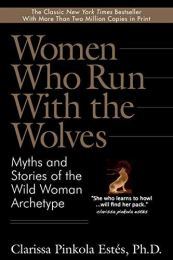
Women Who Run With the Wolves by Clarissa Pinkola Estes (affiliate link)
But within this character—as the subsequent Change Arcs of Crone and Mage shall ripely prove—there is, perhaps not-so-surprisingly, what Clarissa Pinkola Estés refers to in Women Who Run With the Wolves as “fecundity.”
The queen mother/crone … figure represents many things, among them fecundity, the vast authority to see into the tricks of the predator, and the ability to soften curses. The word fecundity, which sounds like drum talk when said aloud, means more than fertile, it means pregnable, the way soil is pregnable. She is that black soil glittering with mica, black hairy roots, and all the life that has gone before, broken down into a fragrant sludge of humus. The word fertility has behind it the sense of seeds, eggs, beings, ideas. Fecundity is the basal matter in which seeds are laid, prepared, warmed, incubated, saved. This is why the old mother is often called by her oldest names—Mother Dust, Mother Earth, Mam, and Ma—for she is the muck that makes ideas happen.
This deep black soil is the treasure of a life’s work. However changed the Elder’s circumstances—from Palace to Hut—this is a character who has lived a full and good life. This is a character who has seen and met many challenges—and, if he or she is a true Elder, has overcome those challenges with grace, courage, and wisdom.
In short, this is a character with a lot to teach just about everyone else. In no small part, it is in this teaching—this ability to impact the coming generation—that the Elder will find personal healing and the strength to embark on the tremendous Change Arcs of the Third Act.
The Elder’s Normal WorldWe see the Elder in the seemingly scary old woman—the Baba Yaga—who lives in a hut deep in the woods and hangs dead cats and other horrors outside her house. The children dare each other to look through her window, convincing themselves she is a witch. And she may play along, in part as jest, in part as unspoken test, and in part because she’s not so sure she wouldn’t just rather be alone.
Estés writes evocatively:
She is outside the seeming happy families of the villages, outside the warm room and out in the cold; that is her life now. This becomes the living metaphor for women on the journey. We begin somehow not to feel a part of the life that carnivals about us. The calliope seems far away, the barkers, the hucksters, the whole magnificent circus of outer life wobbles and then falls to dust as we descend farther into the underworld.
We can see this in many stories about the brave young person—the budding Maiden or Hero—who dares to keep coming back to visit the grumpy oldster, as in Shirley MacLaine’s The Last Word and Bill Murray’s St. Vincent, among many others.

It isn’t, of course, strictly necessary that the Elder live alone or even apart from society. This is merely a symbolic representation of how the Third Act of life is separated from the previous two acts in definite but sometimes vague ways. It is totally possible that the Elder character lives with the children or grandchildren or other relatives.
A good example is found in Truman Capote’s autobiographical stories, such as “A Christmas Memory,” about his childhood friendship with an elderly cousin while both were living with and dependent upon other “less understanding” relatives. In these stories, the cousin isn’t stereotypically “grumpy.” But she is clearly removed from the bustle of “grown-up life,” just as she has also clearly not taken her next transformation into the profound understanding that comes with the following Crone Arc.

If you are to tell a Flat-Arc story about an Elder, what is important is that the character’s (probably self-imposed) isolation or separation is breached in some way. Other characters, after all, have to “get in” in order to be transformed by the Elder’s wisdom. (If the story is about an older protagonist on a lonely quest—such as in David Guterson’s novel East of the Mountains-–then it is probably not a Flat Elder story, but rather a Crone’s Change Arc.)

Why is it that the Elder has different or more thematic Truths to teach than the previous Flat archetypes of Parent and Ruler? Although, obviously, the Elder has lived longer and inevitably picked up a few more clues along the way, the real difference is that the Truths of the Third Act are of a different caliber than those of the previous two acts, however much they may be related.
Estés speaks of the paradigmatic difference:
In the topside world, all is interpreted in the light of simple gains and losses. In the underworld or other world, all is interpreted in light of the mysteries of true sight, right action, and the development of becoming a person of intense inner strength and knowing.
Having just completed the King Arc, the Elder has most recently assimilated a Truth that might be phrased as: “Spiritual strength and physical strength are not always the same. Indeed, sometimes one must be willing to sacrifice the latter for the former.”
More than that, however, the thematic Truth presented in an Elder story will largely depend on whatever it is the younger Change-Arc character needs to learn. At this point, the Elder has done it all (or almost all), at least archetypally speaking. Whatever practical or relational problem the younger character is struggling with will be one the Elder knows the answer to, if only by dint of time and experience.
Even in stories such as St. Vincent, in which the character has clearly not aced all his previous arcs and is in many ways a seeming failure, he still knows what the young Change-Arc character needs in order to advance.

How the Elder Creates Change in Supporting Characters
In many ways, the Elder is an obvious archetype. The idea of the old mentoring the young is familiar to us all. And yet in other ways, the profundity of this archetype has largely faded from modern (or at least Western) culture. Elders are no longer revered as they once were—and I daresay this is largely because few elders are truly Elders, in the archetypal sense of someone who has completed all the initiations and arcs up to this point in the life cycle.
Wherever we encounter true Elder energy, we encounter something very special. We encounter the presence of a person who has the ability to not just guide or teach the younger generation, but to act as the very initiatory force that allows these younger characters to embark upon and complete their own journeys. (It is no accident that it is often, and most significantly, the subsequent impact archetype of the Mentor who “calls” the Hero to the Quest.)
Many of our current Elder stories feature protagonists, such as Bill Murray’s Vincent, who have not fully reached this stage archetypally and who therefore can offer only limited guidance and mentorship to their youngsters. Usually they are still trying to sort through their own unfinished business from their Second-Act arcs. These stories certainly have their place, since they reflect reality and indeed may help us process our current struggles with initiatory arcs. However, a true Elder story is one in which the Elder possesses more than just common-sense advice gleaned from a life’s experience, but more specifically a wisdom so deep it is in fact a latent power.
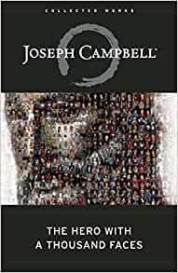
The Hero With a Thousand Faces Joseph Campbell (affiliate link)
In The Hero With a Thousand Faces, Joseph Campbell recounts the beautiful Irish tale of four brothers who tried to convince an old hag to give them water from her well. The three older brothers fail her tests because they fail to understand or respect the simple truth of her well-earned magnificence. Only the youngest brother, Niall, succeeds and earns the right to be initiated by this true Elder:
Types of Story That Feature an Elder Protagonist
Olioll, Brian, Fiches [the older brothers], likewise, went on the quest and equally attained to the identical well. Each solicited the old thing for water, but denied her the kiss [she requested as payment].
Finally, it was Niall who went, and he came to the very well, “Let me have water, woman!” he cried. “I will give it,” said she, “and bestow on me a kiss.” He answered: “forby giving thee a kiss, I will even hug thee!” Then he bends to embrace her, and gives her a kiss. Which operation ended, and when he looked at her, in the whole world was not a young woman of gait more graceful, in universal semblance fairer than she: to be likened to the last-fallen snow lying in trenches every portion of her was, from crown to sole; plump and queenly forearms, fingers long and taper, straight legs of a lovely hue she had; two sandals of the white bronze betwixt her smooth and soft white feet and the earth; about her was an ample mantle of the choicest fleece, pure crimson, and in a garment a brooch of white silver; she had lustrous teeth of pearl, great regal eyes, mouth red as a rowanberry. “Here, woman, is a galaxy of charms,” said the young man. “That is true indeed.” “And who art thou?”‘ he pursued. “Royal Rule am I,” she answered, and uttered this:
“King of Tara! I am Royal Rule…
“Go now,” she said, “to thy brethren, and take with thee water moreover, thine and thy children’s for ever the kingdom and supreme power shall be…. And as at the first thou hast seen me ugly, brutish, loathly—in the end, beautiful—even so is royal rule: for without battles, without fierce conflict, it may not be won; but in the result, he that is king of no matter what shows comely and handsome forth.”
As with all of the Third-Act archetypes, it becomes more and more difficult to find well-executed examples that feature these characters as protagonists. We are much more likely to find them showing up as supporting Impact Characters in a younger protagonist’s story.
These stories can span the gamut of possibilities, depending upon the type of change the younger character is undergoing. Most often, we find the Elder interacting with a Child (who as a fellow Flat archetype may also ingenuously offer certain truths to the Elder, which will aid the older character in the necessary healing and integration before the new trials of the Crone Arc), a Maiden, a Lover, a Parent, or a Queen.
The Elder isn’t likely to interact with a Ruler or King, simply because the Elder is so recently and traumatically graduated from these archetypes. To get involved with figures of power would likely cause a regression. The Elder has just left the Palace; the Hut is where the Elder needs to be for the time.
The Elder also isn’t likely to interact with the Hero, since a Hero showing up at her door often signifies the Elder’s own Call to Adventure within the Crone Arc. As we’ve seen, the Hero will very often accompany the Crone on her descent to the Underworld (such as in Pixar’s Up).

As with most of the Flat archetypes, the Elder is likely to feature in a “domestic” story. Unlike the Change Arcs, which are at least symbolically about threats to the Kingdom (i.e., the “threat” of impending and necessary change), the Flat archetypes represent characters dealing with the mundane, if no less dramatic, trials of daily life.
Indeed, some of our Elders’ most potent work is not even that of undergoing their own remaining transformation arcs, but also simply offering back all they have earned and learned to guide the transitions of the younger arcs who follow in their footsteps.
Examples of the Elder:Examples of the Elder archetype include the following.
John Jarndyce in Bleak HouseNinny Threadgoode in Fried Green TomatoesAunt Trotwood in David CopperfieldVincent in St. VincentHarriet in The Last WordSook in “A Christmas Memory”Stay Tuned: Next week, we will finish our exploration of the Flat archetypes with the Mentor.
Related Posts:
Story Theory and the Quest for MeaningAn Introduction to Archetypal StoriesArchetypal Character Arcs: A New SeriesThe Maiden ArcThe Hero ArcThe Queen ArcThe King ArcThe Crone ArcThe Mage ArcIntroduction to the 12 Negative ArchetypesThe Maiden’s Shadow ArchetypesThe Hero’s Shadow ArchetypesThe Queen’s Shadow ArchetypesThe King’s Shadow ArchetypesThe Crone’s Shadow ArchetypesThe Mage’s Shadow ArchetypesIntroduction the 6 Flat ArchetypesThe ChildThe LoverThe ParentThe RulerWordplayers, tell me your opinions! Can you think of any further examples of stories that feature the Elder? Tell me in the comments!Click the “Play” button to Listen to Audio Version (or subscribe to the Helping Writers Become Authors podcast in Apple Podcast or Amazon Music).
___
Love Helping Writers Become Authors? You can now become a patron. (Huge thanks to those of you who are already part of my Patreon family!)The post Archetypal Character Arcs, Pt. 20: The Flat Archetype of the Elder appeared first on Helping Writers Become Authors.
June 14, 2021
Archetypal Character Arcs, Pt. 19: The Flat Archetype of the Ruler
 The Ruler represents the Flat or “resting” archetype that bridges the Queen’s rise to power and the King’s eventual surrender of that same power. As such, the Ruler represents the potential period in a person’s life in which he or she is in a position of leadership.
The Ruler represents the Flat or “resting” archetype that bridges the Queen’s rise to power and the King’s eventual surrender of that same power. As such, the Ruler represents the potential period in a person’s life in which he or she is in a position of leadership.
This Ruler might be a literal head of state—Queen, King, President, Prime Minister, etc. Or the Ruler might be a CEO, general, admiral, lead scientist, patriarch or matriarch, captain of a small fishing boat, etc. What is important to this archetype (and what distinguishes it from the previous Flat archetype of Parent) is that the Ruler is not just “in charge” but is the undisputed authority within his or her sphere of influence.
The Ruler is not merely the loving guide represented by the Parent (although in a healthy character, the Parent will of course have been incorporated into this more advanced archetype), but rather someone who has learned the hard lessons of the Queen’s rise to power. Namely, the Ruler understands that the primary challenge of true leadership is that of Order. A good Ruler will understand mercy, but will err toward justice. And as a result, the Kingdom runs smoothly and successfully (at least until the dawn of the subsequent King Arc signals it is time for the Crown to be passed on).
From a causal perspective within the “real world,” the Ruler is one of the most powerful of all archetypes. Perhaps literally or perhaps symbolically within the sphere of any specific story’s smaller “Kingdom,” the Ruler’s word is law. The decisions made by such a character have vast reach and will affect the lives of all characters living within the Kingdom (the “younger” and, likely, the “older” archetypes as well). Right away, we can see what a powerful protagonist the Ruler makes within a Flat Arcc—in which the protagonist will not change but will instead enact and offer change to the supporting characters.
The Ruler Archetype: True SovereigntyPrevious Arc: Queen
Subsequent Positive Arc: Crone
Subsequent Possible Negative Archetypes: Hermit (passive); Wicked Witch (aggressive)
The Ruler represents the height of a person’s power potential. This archetype rests at the very center of the entire life cycle. It is the Midpoint between the Second-Act arcs of Queen and King. As such, the Ruler is a character who has long since overcome the primary challenges of mastering the inner world (challenges which were conquered in the young Maiden and Hero Arcs), but has also (thanks to the Queen Arc) gained a significant amount of control over the outer world. Indeed, it is because of the Ruler’s inner-world control that he or she is able to bring similar order and blessing to the Kingdom.
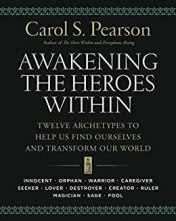
Awakening the Heroes Within by Carol S. Pearson (affiliate link)
The Ruler is able to master the Kingdom precisely because he or she has first mastered Self. We can see this validated if we return to the symbolism of the classical Hero’s Journey, in which the young Hero is often called on his Quest because the King/Ruler is sick—and, as a result, the entire Kingdom has fallen under a blight. In short: healthy Ruler, healthy Kingdom. Carol S. Pearson talks about this in Awakening the Heroes Within:
The Ruler creates a peaceful and harmonious kingdom by becoming peaceful and harmonious inside. The belief system—that inner and outer worlds mirror one another—that informs alchemy is also encoded in the grail myths, especially with regard to the King’s relationship to the kingdom.
A Ruler who can bless the Kingdom with this kind of health is someone who has achieved true sovereignty. We symbolically view this character as “the King” or “the Sovereign” precisely for this reason. A worthy leader is a person who has first mastered or gained sovereignty over themselves. Indeed, the hallmark of a negative Ruler—the Puppet (passive) or the Tyrant (aggressive)—is disrespect for either one’s own personal sovereignty or that of others.
The Ruler’s Normal WorldNot surprisingly, the Ruler’s Normal World may be viewed symbolically as a Kingdom. It is not necessary for the character to literally rule over a nation. Whatever his or her realm of influence, that is the story’s Kingdom. As Pearson says:
…the Ruler is the archetype of material prosperity.
This does not mean the protagonist needs to be wealthy or even to have a great number of “subjects.” What it does mean is that the Ruler has reached the top of the ladder in whatever his sphere of influence—and he’s happy there. If his Kingdom is Jeff Bridges’s floating school for troubled boys in White Squall, then he is content to rule that Kingdom. He is not ambitious. Although he will always be trying to better the lot of his subjects, he is not trying to advance his own position because, archetypally, he is already at the top.

(And, by the way, in case you were wondering, we can know the Jeff Bridges character is primarily a Ruler archetype instead of a Parent archetype because his focus is not on Loving the boys in his charge but rather on helping them become responsible citizens by imposing Order upon them. He’s not protecting them as Children, but demanding they carry their weight as “citizens” within their little floating Kingdom.)
The Kingdom will be a self-contained unit with defined borders. Rulers are not the rulers of everything (unless, of course, they are). Rather, they are finite sovereigns of finite realms with finite borders—and they will recognize and make treaties with other Rulers of other realms.
Whatever the story’s specific Kingdom, it will be a space in which the Ruler can work to effectively impose order and productivity. To whatever degree possible, the Ruler will work to better the lot of the Kingdom’s subjects and keep the system running smoothly.
The Ruler’s Relationship to the Thematic TruthThe Ruler is a very advanced archetype—one that only a few people truly embody, even when they have reached the proper chronological age (although, of course, a Ruler can be represented by chronologically younger characters as well). By this point in the life cycle, the Ruler has successfully learned and integrated many Truths—most recently the Queen Arc’s “Only wise leadership and trust in those I love can protect them and allow us all to grow.” But the very fact that this character is a Ruler—and presumably a pretty good one—means there are many thematic Truths available to be handed down to the Kingdom.
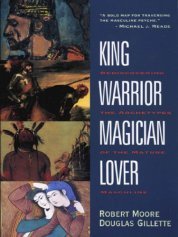
King, Warrior, Magician, Lover by Robert Moore and Douglas Gillette (affiliate link)
In King, Warrior, Magician, Lover, Robert Moore and Douglas Gillette talk about the Ruler’s potentially vast range of influence as the “central archetype”:
Like the Divine Child, the good King is at the Center of the World. He sits on his throne on the central mountain, or on the Primeval Hill, as the ancient Egyptians called it. And from this central place, all of creation radiates in geometrical form out to the very frontiers of the realm. “World” is defined as that part of reality that is organized and ordered by the King. What is outside the boundaries of his influence is noncreation, chaos, the demonic, and nonworld.
This is a character who is not just brave, smart, and caring, but a character who has integrated all the previous arcs’ lessons into a profound wisdom. Even when the Ruler makes mistakes, this is still a character who has much to offer everyone else—if they are willing to accept.
How the Ruler Creates Change in Supporting CharactersA good Ruler is most likely to interact with the younger Heroes, initiating them on their Quests into adulthood. As with all the “older” archetypes, the Ruler here offers a vital transaction within the life-arc cycle. This transaction represents the ability of all the more mature archetypes to help initiate younger archetypes in their own journeys. As Gillette and Moore point out:
Young men today are starving for blessing from older men, starving for blessing from the King energy. This is why they cannot, as we say, “get it together.” They shouldn’t have to. They need to be blessed. They need to be seen by the King, because if they are, something inside will come together for them. That is the effect of blessing; it heals and makes whole. That’s what happens when we are seen and valued and concretely rewarded (with gold, perhaps, dropped from the pharaoh’s hand) for our legitimate talents and abilities.
A good Ruler may also work to transform an upcoming Queen. This might seem surprising at first glance, since the Queen Arc is usually about supplanting a previously unworthy King. But in reality, the Queen’s transition into leadership need not be so dramatic. If she happens to be fortunate to be successor to a good Ruler, that Ruler will not stand in the way of her rise. When it is time for him to take his own King Arc and step down from the throne, he will pass on the Crown to a worthy successor who he has himself blessed and trained up.
Types of Stories That Feature a Ruler ProtagonistCertain stories about teachers are often Ruler stories (again, those that focus more on healthy Order and maturing their students into adulthood, rather than nurturing the students’ Child capacities). War stories that focus on the burden of command can be seen to feature Rulers (such as Band of Brothers and the Captain America stories in the MCU).

And, of course, Ruler characters are often just that—rulers of countries, kingdoms, villages, galaxies, etc. Flat-Arc stories about monarchs and presidents are almost always stories about Rulers (unless, of course, they are stories about Puppets or Tyrants).
Usually, a Ruler story will feature strong subplots about the arcs of the younger characters who are influenced by the Ruler protagonist. But if the story is truly a Flat Arc featuring a Ruler protagonist (versus a Change-Arc in which the protagonist is a younger archetype and the Ruler is instead a supporting Impact Character), the Ruler will be presented as the character with the most agency at all of the important structural beats.
Examples of the Ruler:Examples of the Ruler archetype include the following. Click on the links for structural analyses.
Mr. Knightley in EmmaLeia Organa in Star WarsJack Aubrey in the Aubrey/Maturin seriesSteve Rogers in the MCUFuriosa in Mad Max: Fury RoadSkipper Sheldon in White SquallDick Winters in Band of BrothersSister Julienne in Call the MidwifeStay Tuned: Next week, we will study the Flat archetype of the Elder.
Related Posts:
Story Theory and the Quest for MeaningAn Introduction to Archetypal StoriesArchetypal Character Arcs: A New SeriesThe Maiden ArcThe Hero ArcThe Queen ArcThe King ArcThe Crone ArcThe Mage ArcIntroduction to the 12 Negative ArchetypesThe Maiden’s Shadow ArchetypesThe Hero’s Shadow ArchetypesThe Queen’s Shadow ArchetypesThe King’s Shadow ArchetypesThe Crone’s Shadow ArchetypesThe Mage’s Shadow ArchetypesIntroduction the 6 Flat ArchetypesThe ChildThe LoverThe ParentWordplayers, tell me your opinions! Can you think of any further examples of stories that feature the Ruler? Tell me in the comments!Click the “Play” button to Listen to Audio Version (or subscribe to the Helping Writers Become Authors podcast in Apple Podcast or Amazon Music).
___
Love Helping Writers Become Authors? You can now become a patron. (Huge thanks to those of you who are already part of my Patreon family!)The post Archetypal Character Arcs, Pt. 19: The Flat Archetype of the Ruler appeared first on Helping Writers Become Authors.
June 7, 2021
Archetypal Character Arcs, Pt. 18: The Flat Archetype of the Parent
 When we think of archetypal characters, the Parent probably isn’t the first to come to mind. Despite the fact that becoming and being a parent is one of the most obvious initiations within even our modern lives, we don’t often think of the Parent with the same enthusiasm as we do the Hero. And yet they are intrinsically linked.
When we think of archetypal characters, the Parent probably isn’t the first to come to mind. Despite the fact that becoming and being a parent is one of the most obvious initiations within even our modern lives, we don’t often think of the Parent with the same enthusiasm as we do the Hero. And yet they are intrinsically linked.
The Parent is the Flat or “resting” archetype that follows or results from what is currently our most iconic character arc—the Hero’s Journey. In some ways, as with all archetypes, this is merely a symbolic evolution, since not all Heroes fresh from their battles will literally settle down to start families. But not only is the Parent historically the next obvious step for the Hero, it is also a deeply symbolic transitional period between the First Act of a character’s life and the Second Act.
Remember, the First Act of the life cycle of archetypal character arcs represents approximately the first thirty years of the human life—during which the primary transformation struggles of the Maiden and Hero Arcs are defined by the challenges of Relationship With Self. Successful completion of the Hero Arc signifies that the character has been able to achieve both individuation from the tribe as a child and reintegration back into it as an adult.
Now, as the Parent, the character rests upon the turning point into the challenges of the Second Act, during which the primary transformation struggles of the Queen and King Arcs will be defined by the challenges of Relationship With Others—and particularly the power dynamic of relating to younger people who have less power.
The Parent’s “rest” (and I know all parents are laughing at the word!) before the next transformation of the Queen Arc signifies a period in which the character can regroup after the travails and victories of the now completed Hero’s Quest. In essence, the character is a soldier returned from war who may now enjoy a hard-won and justly deserved peace.
More than that, as a Flat archetype, the Parent has the opportunity to bless the Kingdom to which he or she has returned. The character is now an adult with a good deal of important life experience. Whether the character uses this experience to teach and rear actual children or more symbolically in simply contributing to the health of the larger community, the result will be the opportunity for other characters to learn from the Parent’s hard-won thematic truths.
The Parent Archetype: The Hero at HomePrevious Arc: Hero
Subsequent Positive Arc: Queen
Subsequent Possible Negative Archetypes: Snow Queen (passive); Sorceress (aggressive)
It has become something of a cliché that the Hero’s Journey should end with the protagonist “getting the girl” and “riding into the sunset.” Usual complaints aside, this in fact refers to something of deep symbolic import. Specifically, what is being dramatized is the Hero’s return to and reintegration into the community, not just as the youth he was before, but as someone ready to form a union with another person and perhaps begin raising and teaching the next generation of characters.
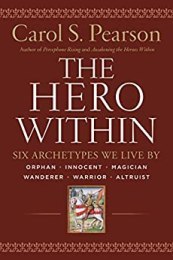
The Hero Within by Carol S. Pearson (affiliate link)
In The Hero Within, Carol S. Pearson explains:
Symbolically, it is important that at the end of the old heroic myth, after he has confronted his fear by slaying the dragon, the Warrior comes home and marries. The reward for his battle is that he becomes, finally, a lover.
Pearson is here referencing the Warrior archetype more specifically than the Hero (although, of course, they share much in common archetypally speaking), but she points again to the inherent challenge of the Hero Arc being that of submitting his power to a “love worth fighting for.” Within the Hero Arc itself, it is possible (although not required) that this love be romantic, but by the time the Hero has returned to the Kingdom to become the Parent, that love will extend to encompass a much larger “family” to which the character is now willingly responsible.
In many ways, the Parent represents the mysterious “happily ever after” that classically ends so many Hero stories (and, again, I know the parents among us may be snickering!). It is a time when the harvest of the character’s life is ripe. Even if circumstances are not literally perfect in the external world (e.g., the character works long hours in or out of the home to care for the family), they are stable. And the character is primarily content with the status quo. Any personal changes that are yet to occur will take place later in the subsequent Queen Arc. For now “war is over,” and life seems to be going exactly as it should.
The Parent’s Normal WorldAfter the questing of the Hero Arc, the Parent has returned home once more. However, it can be helpful to realize that the Village that comprised the Normal World at the beginning of the Hero Arc has, at least from the character’s perspective, broadened into a larger Kingdom. Having seen the world during the Quest, the character understands the world is a larger, more interconnected place than was obvious in the First-Act arcs.
More specifically, however, the Parent’s Normal World can be thought of as “the Hearth,” since the primary focus is on what’s happening in the character’s own home rather than “out there” in the larger world. The primary focus within this interstitial period is that of nurturing others, loving them, raising them, teaching them, helping them grow.
This is, of course, where we see the cycle start to repeat. Both the Child archetype and the Maiden archetype began with the character as a young person faced with the challenge of separating from the Parent and the Hearth. Now, that Child has become the very Parent from whom the next generation will eventually have to individuate as well. Indeed, the next challenge for the Parent, in the subsequent Queen Arc, will be that of letting the Maidens individuate.
For now, however, this challenge remains in the future, as the Children are yet too young and dependent. At this stage, it is vital that the responsible Parent, whether father or mother, provide the love and security that will give the Children a strong foundation from which to begin their own arcs.
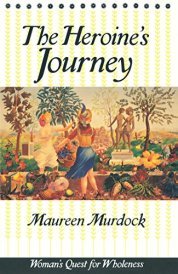
The Heroine’s Journey by Maureen Murdock (affiliate link)
In The Heroine’s Journey, Maureen Murdock describes this stage specifically in reference to the mother:
The Parent’s Relationship to the Thematic TruthIn most cases the mother is the primary object of an infant’s dependency, and the task of the child is to move from this fused symbiotic relationship toward separateness, individuation, and autonomy. If the mother is perceived by the child as the source of nurture and support, the child will experience her as a positive force; if she is perceived as neglectful or smothering, the child will experience her as destruction.
Although the Parent, like all the Flat archetypes, does not represent transformation, it is still a period of great valor. More than ever, the Parent represents a character who now bears great responsibilities for the well-being of others. True Parents (who do not devolve into the negative counter-archetypes) will prove themselves steady in the face trial and temptation. As Pearson says of this period:
Perhaps you have always been very independent and like to explore the world, but then you have a baby. Now you must sacrifice some of that desire for exploration in order to care for your child. To do it well, how can you access a more nurturing potential within yourself?
The true Parent is able to act as a positive and stable force within the world thanks to the thematic Truths learned in the previous arc, and especially the immediately previous arc of the Hero. That Truth may be thought of as simply, “All my actions affect those I love.”
By already completing the Hero Arc, the Parent has already proved his or her ability to sacrifice out of love. Now that sacrifice continues in a more prosaic (but no less poignant) way. It is via the daily affirmation of this heroic Truth that the Parent is able to enact tremendous change within the lives of supporting characters.
How the Parent Creates Change in Supporting CharactersMost obviously, the Parent will parent his or her own children. But the relationship can, of course, also be symbolic. The Parent may mentor children or young people who are not related, or may even act the parental role toward chronological peers. What is important is simply that the “children” are characters who have not yet reached the same level of initiation as the Parent.
Although the Parent can influence change for any “younger” archetype, he or she is most likely to enact an important formative relationship with the Maiden. The Parent/Maiden dynamic is extremely important, since the Maiden Arc represents the Child’s first and most important struggle against the Parent. This almost always represents a tremendous challenge not just to the Maiden who is beginning to individuate, but to the Parent as well. Parents who understand the lessons of the previous arcs can consciously allow and even guide a young Maiden in separating from them.
Pearson again:
In a world that changes rapidly, it is a rare set of parents who actually can groom the next generation for what is to come.
To the degree the Parent fails in representing the thematic Truth to the Maiden (or any other character), he or she risks becoming the antagonist in that supporting character’s own story (as we’ve seen via the Maiden’s symbolic antagonists of Too-Good Mother, Naive Father, and even Predator).
Types of Stories That Feature a Parent ProtagonistThe Parent most obviously shows up in stories of family drama or comedy. Sometimes these stories are explicitly about the trials of being a parent, such as in Steve Martin’s comedy Parenthood. Or the story could be about the coming-of-age of a Maiden but shown through the perspective of the Parent.

Stories in which a Parent “takes on the system” to defend a child in some way are common. It’s also common to see the Parent represented by a teacher character who acts positively within the lives of students, even or especially if the students are not receiving proper parenting at home.
Parent protagonists can also be seen in stories that focus less on actual parenting and more on the struggles of providing for one’s family.
What is central to all of these stories is a specific relationship dynamic between a character who provides some sort of care and guidance for at least one younger or more vulnerable character.
Examples of the Parent:Examples of the Parent archetype include the following. Click on the links for structural analyses.
Hagrid in Harry Potter and the Philosopher’s Stone (among others)M’Lynn Eatenton in Steel MagnoliasKay Miniver in Mrs. Miniver Marmee March in Little Women Hans and Rosa Hubermann in The Book ThiefAndy Taylor in The Andy Griffith ShowStay Tuned: Next week, we will study the Flat archetype of the Ruler.
Related Posts:
Story Theory and the Quest for MeaningAn Introduction to Archetypal StoriesArchetypal Character Arcs: A New SeriesThe Maiden ArcThe Hero ArcThe Queen ArcThe King ArcThe Crone ArcThe Mage ArcIntroduction to the 12 Negative ArchetypesThe Maiden’s Shadow ArchetypesThe Hero’s Shadow ArchetypesThe Queen’s Shadow ArchetypesThe King’s Shadow ArchetypesThe Crone’s Shadow ArchetypesThe Mage’s Shadow ArchetypesIntroduction the 6 Flat ArchetypesThe ChildThe LoverWordplayers, tell me your opinions! Can you think of any further examples of stories that feature the Parent? Tell me in the comments!Click the “Play” button to Listen to Audio Version (or subscribe to the Helping Writers Become Authors podcast in Apple Podcast or Amazon Music).
___
Love Helping Writers Become Authors? You can now become a patron. (Huge thanks to those of you who are already part of my Patreon family!)The post Archetypal Character Arcs, Pt. 18: The Flat Archetype of the Parent appeared first on Helping Writers Become Authors.
May 31, 2021
Archetypal Character Arcs, Pt. 17: The Flat Archetype of the Lover
 As Doris Day used to say, “Everybody loves a lover.” While that might not be universally true, what is true is that the Lover archetype is one inherent and even integral within the human life cycle. Although it is a deeply nuanced archetype that evolves with us for most of our lives—and shows up in many guises—it is particularly foundational to the First Act of our lives, when it first emerges in response to the coming-of-age lessons of the Maiden Arc.
As Doris Day used to say, “Everybody loves a lover.” While that might not be universally true, what is true is that the Lover archetype is one inherent and even integral within the human life cycle. Although it is a deeply nuanced archetype that evolves with us for most of our lives—and shows up in many guises—it is particularly foundational to the First Act of our lives, when it first emerges in response to the coming-of-age lessons of the Maiden Arc.
The archetypal Lover, as I will be discussing it here, is not simply a person who falls in love. Obviously, falling in love can happen at any stage of one’s life and in relationship to any of the progressive archetypal character arcs. Specifically, the Lover as a Flat archetype within this particular system of archetypes is in reference to “first love” or “young love.” It is the period of awakened love and sexuality in which a character is just beginning to explore what it might mean to no longer be “one” with the tribe, but simply “one” with another “one.”
This is not a mature love. It is the intense, wonderful, passionate, exploratory, sometimes frightening first love of the young adult. Although it signifies growth, it is also an ironically destructive force, since it signifies the means and the route by which the youth finds a path away from the necessary “mother love” of the parents, from whom he or she has only so recently begun to individuate, and into the possibility of a supporting love and union with another individuated person.
As the “resting” period between the crucibles of the Maiden and the Hero Arcs, the Lover also represents the foundation the Hero will require for moving forward into his all-important Quest. As you may remember, the Hero Arc, which completes the youthful initiations of life’s First Act, is ultimately about learning to submit one’s personal Power to a worthy Love.
The Love of the Hero is not specifically a romantic love (although it is often represented as such). Rather, it is a Love that allows him to re-integrate as a mature adult with the tribe from which he has now successfully individuated. His explorations of romantic love both prior to and during his transformative arc rest upon the Lover archetype that knits together the journeys of the Maiden and the Hero.
Because the Lover has so far completed only one arc (the Maiden), the love experienced in this period is still unformed, possessive, immature, and often un-individuated. It is the teenage love eulogized in so many pop songs. The love that will be experienced later, in the Hero arc, is the maturing of this potential into a deeper, richer, more developed love—one that can give without giving away one’s self.
The Lover Archetype: Empowered YouthPrevious Arc: Maiden
Subsequent Positive Arc: Hero
Subsequent Possible Negative Archetypes: Coward (passive); Bully (aggressive)
There is a reason YA romance is so popular. At hardly any other time in life (at least not consistently) is one likely to experience the overwhelming intensity of emotion that is available when you are young enough to be in love but not yet fully emerged into the adult you will become. Young love is almost a merging—not always completely centered or healthy—but always transformative.
What is important about placing the Lover archetype between the Maiden and the Hero Arcs is the emphasis upon the character’s newly growing agency (which is closely linked to burgeoning sexuality). The previous Maiden Arc focuses upon an awakening from childhood into adulthood. That arc ends with the character beginning to step into adult power—and that power is very likely to be expressed (openly or otherwise) via the character’s budding pursuit of romance.
Like the Child archetype before it, the Lover archetype clearly represents a volcano of transformation. But as discussed here, the Lover is a “Flat” archetype. This is not because falling in love, especially for the first time, does not create massive transformation within a person. Rather, it is because the actual change that is linked to growing into and out of this archetype is addressed in the previous Maiden Arc and subsequent Hero Arc.
The Lover’s Normal WorldThe Lover is a character who has completed the previous Maiden Arc. The archetype can be represented by a person of any age, but chronologically within the cycle, the character is still quite young—mid to late teens. As shown in so many YA stories, this is a character who is perhaps just finishing up high school (and preparing for the Hero’s Quest that will follow). The character senses the changes gathering on the horizon, but does not yet need to fully face them.
Having gained the right and ability to move beyond the walls of the family Home in the Maiden Arc, the Lover’s Normal World is now represented by the slightly larger confines of the Village. The character’s world exists beyond simply that of parents and siblings. Friends, teachers, and employers are now relationships that he or she must navigate on the way to finding a grown-up role amongst the tribe.
The Lover still has quite a bit in common with the Child, but the foundational innocence is now gone. The Lover now knows that the world is not unchanging—and he or she is not unchanging in it. There is a great deal of uncertainty in the world that the character was not previously aware of. The Lover’s theme song might be “Que Sera, Que Sera” (since we seem to be on a Doris Day kick today):
When I was just a little girl
I asked my mother, what will I be
Will I be pretty
Will I be rich
Here’s what she said to meQue sera, sera
Whatever will be, will be
The future’s not ours to see
The character is no longer completely at ease within this world, and as a result the world itself will be challenged to change itself to accommodate this character who is suddenly no longer a predictable Child.
The Lover’s Relationship to the Thematic TruthWhat Truth has a character so young and unsteady as the Lover to communicate to supporting characters? Unlike the Child, who in some ways represents “all” potential truths simply because the Child does not yet have any personal truths, the Lover now has at least one Truth—gained from the transformation of the Maiden Arc. The essence of that Truth is “Personal sovereignty is necessary for growth and survival.”
The Lover is such a young character that he or she is unlikely to be particularly articulate about this Truth. This character’s ability to create transformational change in others is far less about “telling” them anything and much more about the catalyzing influence of the youthful person’s very existence. The young flame burns brightly, and it acts as both effortless inspiration to those who would follow and unspoken reminder to those who have gone before.
How the Lover Creates Change in Supporting CharactersIn discussing the Lover here, we are discussing the interstitial period when a character has individuated enough to fall in love but has not yet been asked to fully grapple with the ramifications of this great life change (which will occur in the Hero Arc). Instead, the Lover is a static character who is able to influence change upon others. Having undergone the Maiden Arc, this character already knows something that many of his or her peers will not yet have learned (and, indeed, something that many of the adults have either never fully integrated or somewhat forgotten).
As with all the Flat archetypes, the Lover is most likely to encourage change in those characters who are “behind” within the cycle. At this point, that means the characters most likely to be changed by a Lover protagonist are those who are on the Maiden Arc themselves.
Most obviously, the Lover is likely to encourage a transformation in the very person he or she loves. Falling in love for the first time can be the transformational spark that sets off the Maiden Arc. It is certainly possible (and common) for both young characters to be concurrently taking the Maiden Arc. However, it is also possible that the Lover character, who has already arced, is the one catalyzing the transformation for the other person.
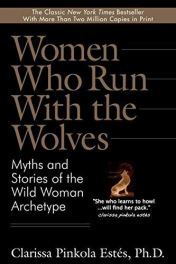
Women Who Run With the Wolves by Clarissa Pinkola Estes (affiliate link)
Indeed, the ability to choose wisely and well whom to love is one of the great challenges of this individuation period, as Clarissa Pinkola Estés points out in Women Who Run With the Wolves:
Types of Stories That Feature a Lover ProtagonistA lover cannot be chosen a la smorgasbord. A lover has to be chosen from soul-craving. To choose just because something mouth-watering stands before you will never satisfy the hunger of the soul-Self.
The Lover most obviously appears in love stories—usually coming-of-age love stories. Sometimes these stories offer happy endings; just as often, and perhaps more realistically, they end tragically with the realization that however formative this early love affair, it cannot last into the next journey.

Sacred Contracts by Caroline Myss (affiliate link)
But Lover stories don’t absolutely have to be about a protagonist who falls in love with another person. What is important in utilizing this archetype is recognizing it as the interstitial period between the transformations of Maiden and Hero. Ultimately, what the Lover represents is discovery. In Sacred Contracts, Caroline Myss speaks of the Lover archetype (which she references more broadly and does not confine to this early period of life) as being defined by “passion” and “devotion”:
This archetype appears not only in those who are romantically inclined, but also in anyone who exhibits great passion and devotion. One can be a Lover of art, music, gardening, Persian carpets, nature, or needlepoint. The key is having a sense of unbridled and exaggerated affection and appreciation of someone or something that influences the organization of your life and environment.

Walking on Water by Madeleine L’Engle (affiliate link)
In Walking on Water, Madeleine L’Engle quotes James Baldwin’s analogy of the Lover’s transformative qualities in comparison to the artist’s:
…the role of the artist is exactly the same as the role of the lover. If I love you, I have to make you conscious of the things you don’t see.
We can find this in many coming-of-age stories which simultaneously develop the Lover character’s young romances alongside an exploration of some passion or talent, such as that of the Pre-Raphaelite painters of the 19th-center as portrayed in the BBC ‘s (not-particularly-historical-or-flattering) mini-series Desperate Romantics.
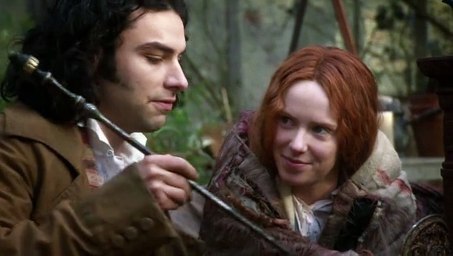
What defines a Lover story (in comparison to a Maiden or Hero story) is its somewhat episodic nature. Regardless of whatever joy or sorrow the protagonist may experience, and regardless how drastically the supporting characters may evolve, the story’s symbolic setting will not change. The Maiden Arc sees the protagonist move from Home to Village, and the Hero Arc sees the protagonist move from Village to Kingdom. But the Lover remains in the Village throughout. The Hero Arc will beckon later on.
Examples of the Lover:Examples of the Lover archetype include the following.
Everybody in Sense & SensibilityEverybody in Desperate RomanticsTom in 500 Days of SummerWestley and Buttercup in The Princess BrideRomeo & Juliet in Romeo & JulietAugustus Waters in The Fault in Our StarsStay Tuned: Next week, we will study the Flat archetype of the Parent.
Related Posts:
Story Theory and the Quest for MeaningAn Introduction to Archetypal StoriesArchetypal Character Arcs: A New SeriesThe Maiden ArcThe Hero ArcThe Queen ArcThe King ArcThe Crone ArcThe Mage ArcIntroduction to the 12 Negative ArchetypesThe Maiden’s Shadow ArchetypesThe Hero’s Shadow ArchetypesThe Queen’s Shadow ArchetypesThe King’s Shadow ArchetypesThe Crone’s Shadow ArchetypesThe Mage’s Shadow ArchetypesIntroduction the 6 Flat ArchetypesThe ChildWordplayers, tell me your opinions! Can you think of any further examples of stories that feature the Lover? Tell me in the comments!Click the “Play” button to Listen to Audio Version (or subscribe to the Helping Writers Become Authors podcast in Apple Podcast or Amazon Music).
___
Love Helping Writers Become Authors? You can now become a patron. (Huge thanks to those of you who are already part of my Patreon family!)The post Archetypal Character Arcs, Pt. 17: The Flat Archetype of the Lover appeared first on Helping Writers Become Authors.
May 24, 2021
Archetypal Character Arcs, Pt. 16: The Flat Archetype of the Child
 In many ways, the Child is hardly a Flat or unchanging archetype at all. Even though we often perceive and remember childhood as a chapter in which everything remained the same (until suddenly it didn’t), the years before puberty are, of course, some of the most rapidly transformational of any part of our lives.
In many ways, the Child is hardly a Flat or unchanging archetype at all. Even though we often perceive and remember childhood as a chapter in which everything remained the same (until suddenly it didn’t), the years before puberty are, of course, some of the most rapidly transformational of any part of our lives.
I suppose you could argue for another important life arc in there somewhere. And yet for all children, there is also a definitive sameness to this period of life. No matter our individual personalities or family circumstances, we are all children—innocents, blank slates. More than that, we are free from the responsibility of growth that arrives with burgeoning adolescence and the onset of the Maiden Arc (which, as mentioned throughout this series, can and should be taken by everyone).
At first glance, the Child archetype also seems to be lacking in the Flat-Arc ability to transform the story world or supporting characters. However, I think any adult who has had a child enter his or her life will attest that few grown-ups are as utterly transformative and growth-inducing as are children!
More than that, the Child is often a surprisingly (if unwittingly) wise archetype. If we recognize that story structure always come full circle, we can see how the final character arc of the life cycle—the enlightened Mage—is in many ways a fulfilled return to the Child’s deep connection to and instinctive understanding of life.
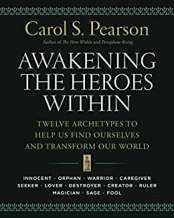
Awakening the Heroes Within by Carol S. Pearson (affiliate link)
In her book Awakening the Heroes Within: Twelve Archetypes to Help Us Find Ourselves and Transform Our World, Carol S. Pearson opens her cycle of archetypes with what she calls the Innocent and ends (even after her Magician) with the Fool—which she also calls the Wise Innocent and which she considers the highest of all the archetypes. She speaks of this end-of-life return to the beginning in a way that highlights many of the inherent if unconscious attributes of the Child archetype:
So the circle is now complete, and we are ready to experience the cycle again—but this time beginning a new level. Because we have learned to enjoy life for its own sake, we need not protect our innocence with denial or hold on to conventionality to protect our “social places.” We know it is safe to trust, not so much because bad things do not happen in life but because we have learned about our great resilience.
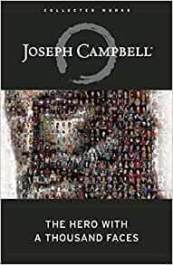
The Hero With a Thousand Faces Joseph Campbell (affiliate link)
If the Mage’s full-circle epiphany ends the life arcs, then it is the Child at the beginning who represents all this capacity for joy, innocence, trust, and resilience—but from a place of no power and no experience. As such, the Child is necessarily an archetype of deep vulnerability. As Joseph Campbell says in The Hero With a Thousand Faces:
…just beyond the parental watch is danger to the infant…
A fortunate Child will be protected from those dangers until adolescence finally demands an opening of the eyes and an embarkation upon the initiatory journey of the Maiden Arc. But even Children who are not forced to precipitously undertake their first change arc will still encounter many opportunities for adventures and discovery—particularly as they witness and influence the growth of supporting characters around them.
The Child Archetype: Untapped PotentialPrevious Arc: [None]
Subsequent Positive Arc: Maiden
Subsequent Negative Archetypes: Damsel (passive); Vixen (aggressive)
The Maiden Arc is traditionally the “YA” time of a person’s life—beginning as early as puberty but often not fully completing until the mid to late teens. Therefore, the Child is an archetype we generally find represented by characters younger than thirteen or so. Their stories (as written by adults) are often full of magic and nostalgia. Even if the plot itself revolves around adults in difficult or even dark circumstances, the story is poignantly represented through the limited understanding of the Child protagonist.
Classics such as Anne of Green Gables and To Kill a Mockingbird show us adult worlds through the eyes of Child protagonists. Even when heavy subjects are at play (problematic foster systems and racial injustice, respectively), the stories themselves are surprisingly whimsical.

Despite whatever difficulties these Child protagonists may have so far endured in their lives, they have yet maintained their innocence. They are yet “one” with society’s protective figures, un-individuated from those whom they trust (or at least hope) will care for their needs. They haven’t yet cultivated the cynicism or irony of someone who has learned “what the world is really about”—namely, taking responsibility for one’s self.
Anne of Green Gables is an obvious (and perhaps extreme) example of a Child protagonist who starts the story having undergone severe neglect and even abuse at the hands of foster families, and yet who miraculously and tenaciously clings to her childish wonder of a world that she persists in believing is glorious, romantic, and even magical.
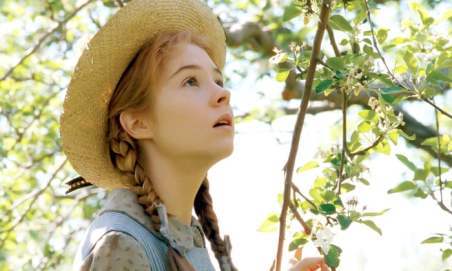
The Child is an archetype of untapped potential. We all know this character will grow up, will hit puberty, will be confronted with the Maiden’s challenges of growing up. The innocence will be shaken and fade for at least a time. But within the Child archetype, we also find the promise of what can be reclaimed if this character is able to faithfully complete the cycle of life arcs.
The Child’s Normal WorldThe Normal World in which the Child begins the story is, at least symbolically, the Home. It is a comparatively small place, bounded by the rules, protection, and hopefully love of the Parent or other protective figure. Already we see where later archetypes might show up (the Parent/Queen as well as perhaps older siblings in the guise of Maiden or Hero).
Within this world, the Child has a surprising amount of freedom. Unlike later archetypes, the Child has few responsibilities imposed either from without or from within. The Child is free to roam, to play, and to discover. And usually, it is this propensity for discovery that creates the dilemmas and opportunities for the story’s plot.

Trixie Belden and the Mystery Off Glen Road by Julie Campbell (affiliate link)
Many an episodic children’s series (such as one of my childhood favorites, Trixie Belden) centers around the protagonist’s incorrigible curiosity and the mysteries they keep sniffing out book after book. Particularly in stories aimed at a child audience, these protagonists never change much, never grow up. But their innocence in “not knowing any better” often leads them to insights that the adults around them would never have noticed.
Some stories feature a Normal World that is not safe and static, but that is changing right around the Child protagonist, even though the Child doesn’t yet notice. The Child has no idea life is about to forever change (and probably launch a Maiden Arc). Rather, the character romps through the last halcyon adventures of a dying age, such as in Rob Reiner’s classic film Stand by Me, set in the 1950s (and based on a Stephen King story).
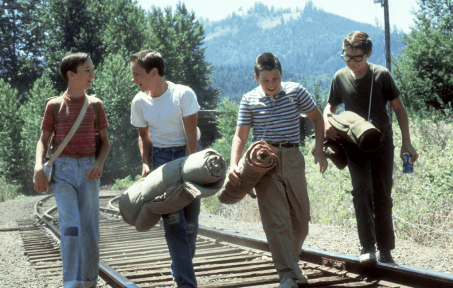
Although the Child will likely learn many things, he or she will not fundamentally change except perhaps at the very end of the story with the foreshadowing of the inevitable Maiden Arc to follow. Instead, as with all Flat-Arc characters, the Child will (probably unwittingly) convey a thematic Truth to at least one supporting character, who will change as a result. (The supporting character may or may not undergo a fully developed archetypal journey, depending on how prominent the role is.)
Because the Child has not, in fact, learned any archetypal Truths at this point in his or her young life, the thematic Truths in these stories tend to focus around the perennial themes and gifts of childhood: innocence, joy, love, presence, playfulness, loyalty, etc. The naïvety and innocence of the Child allows the character to believe in the uncorrupted virtues that many adults struggle with and/or mourn for the rest of their lives.
How the Child Creates Change in Supporting CharactersUnlike other Flat archetypes, the Child has not yet personally gleaned Truths that can be shared with younger characters. All of the characters will either be fellow Children at the same level of innocence or older characters who are much farther along the archetypal journey of growth.
And yet, the Child’s purity and innocent wisdom still has the ability to profoundly impact the change arcs of supporting characters. Even if the supporting characters should resist the change inspired by the Child, the audience will still understand the profundity of the Child’s simplicity. The Child has the opportunity to offer a sort of “redemption” or “return to innocence” for older, more hardened supporting characters. We can see this in Anne of Green Gables, in which the buoyant orphan Anne revitalizes the lonely and hardened older couple with whom she comes to live, and in Oliver Twist, in which Oliver (another orphan) inspires compassion and (ultimately fatal) virtue in the prostitute Nancy who tries to help him escape the criminal underworld of London.

Even more than with most Flat-Arc archetypes, the possibilities for the type of story are particularly vast. The story can be fun and funny or dark and dangerous. It can be about the relationship between the Child and other Children, or about the Child and any of the adult archetypes. It may be a story of redemption for an adult character, or it may be a story about a family overcoming adversity. It can be set in any time or place and can be framed within any genre. It can be written for children or for adults.
Cozy mysteries and memoir-like adventures are popular and fun. But serious social commentaries from a child’s perspective, as in To Kill a Mockingbird, can be all the more powerful for their atypical narrator/protagonist.
In many ways, the “untapped potential” of the Child archetype makes it one of the most versatile of all the Flat archetypes. In fact, writing a Child character can invite us back into the uncensored creative options of this foundational period in all our lives.
Examples of the Child:Examples of the Child archetype include the following. Click on the links for structural analyses.
Scout Finch in To Kill a Mockingbird Tom Sawyer in Tom SawyerAnne Shirley in Anne of Green GablesOliver Twist in Oliver TwistJohnny Dorset in “The Ransom of Red Chief”Nat Cooper in Forever YoungTrixie Belden in Trixie BeldenGordie LaChance in Stand by MeStay Tuned: Next week, we will study the Flat archetype of the Lover.
Related Posts:
Story Theory and the Quest for MeaningAn Introduction to Archetypal StoriesArchetypal Character Arcs: A New SeriesThe Maiden ArcThe Hero ArcThe Queen ArcThe King ArcThe Crone ArcThe Mage ArcIntroduction to the 12 Negative ArchetypesThe Maiden’s Shadow ArchetypesThe Hero’s Shadow ArchetypesThe Queen’s Shadow ArchetypesThe King’s Shadow ArchetypesThe Crone’s Shadow ArchetypesThe Mage’s Shadow ArchetypesIntroduction the 6 Flat ArchetypesWordplayers, tell me your opinions! Can you think of any further examples of stories that feature the Child? Tell me in the comments!Click the “Play” button to Listen to Audio Version (or subscribe to the Helping Writers Become Authors podcast in Apple Podcast or Amazon Music).
___
Love Helping Writers Become Authors? You can now become a patron. (Huge thanks to those of you who are already part of my Patreon family!)The post Archetypal Character Arcs, Pt. 16: The Flat Archetype of the Child appeared first on Helping Writers Become Authors.
May 17, 2021
Archetypal Character Arcs, Pt. 15: Introduction to the 6 Flat Archetypes
 In studying character arcs, writers easily recognize Positive-Change Arcs and Negative-Change Arcs. But somewhat more baffling can be the stories that appear to feature neither. These are stories in which the protagonist does not change or seems to have no character arc at all. How do these stories fit into the discussion of archetypal character arcs?
In studying character arcs, writers easily recognize Positive-Change Arcs and Negative-Change Arcs. But somewhat more baffling can be the stories that appear to feature neither. These are stories in which the protagonist does not change or seems to have no character arc at all. How do these stories fit into the discussion of archetypal character arcs?
If you’ve studied foundational character-arc theory and practice with me before, you know there are two possible answers to the seeming conundrum of the “character with no arc.”
One is simply that he or she doesn’t arc. Both the protagonist, the supporting cast, and the story world itself remain relatively unchanged from beginning to end, despite everyone’s adventures. Indeed, the very point of their adventures might be to maintain a desirable status quo.
The other possibility is that the unchanging protagonist is in fact spearheading what I call a Flat Arc. As the name suggests, this is an arc in which the protagonist—the story’s central actor—remains thematically unchanged, but uses his or her understanding of the story’s central thematic Truth to catalyze change arcs in the supporting characters. (Flat-Arc protagonists are usually positive influences, or Impact Characters, but if their fixation is on the thematic Lie rather than the Truth, they can also be instrumental in catalyzing Negative-Change Arcs for the supporting characters.)
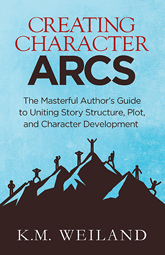
Creating Character Arcs (Amazon affiliate link)
Over the last few months, we have explored six successive “life arcs,” represented by the Positive-Change Arcs of six primary archetypes—the Maiden, the Hero, the Queen, the King, the Crone, and the Mage. Each of these positive archetypes represents a rising above the limitations of the previous archetype in the cycle. They also inherently represent a struggle with twelve related “shadow” or negative archetypes—the Damsel/Vixen, the Coward/Bully, the Snow Queen/Sorceress, the Puppet/Tyrant, the Hermit/Witch, and the Miser/Sorcerer.
As unchanging characters, Flat-Arc protagonists are equally archetypal. But unlike the six Positive-Change Arcs, they do not demonstrate a “journey” from one archetype to another (e.g., Maiden to Hero). Rather, they represent the interstitial period of a character’s life, in which the character may be seen to be “resting” in between personal transformations. As such, these Flat archetypes are often seen to be helping or teaching other characters some of the same lessons they just learned in their own previously completed arcs.
6 Flat or “Resting” ArchetypesThe six flat or resting archetypes can be seen like this:
1. Child (precedes Maiden Arc)
2. Lover (precedes Hero Arc)
3. Parent (precedes Queen Arc)
4. Ruler (precedes King Arc)
5. Elder (precedes Crone Arc)
6. Mentor (precedes Mage Arc)
As you can see, many of these Flat archetypes initially seem synonymous with the change arcs that follow (e.g., Ruler/King, Crone/Elder). In some ways, they are synonymous, in large part because each of the Positive-Change archetypes begins its First Act within the complacency of the preceding Flat archetype. For example, the King Arc begins with the character clearly a Ruler, but the story does not leave him as such, since by the end he will be asked to give up his throne in some way. However, a story that is about the Flat archetype is one in which the protagonist will begin and end within the same archetype. If he begins as a Ruler, he will end as a Ruler, still upon his throne in the story’s conclusion.
How to Use Flat Archetypes in a StoryFlat Arcs are anything but boring. They offer the potential to unapologetically present archetypal characters who do what we all want to do—enact meaningful change on the world around us. (Depending on whether the protagonist is aligned with the story’s thematic Truth or Lie, that change may be more or less positive or negative. But for the sake of this discussion, since we’ve already discussed the negative archetypes, we will be assuming that the archetypal protagonists featured in these Flat-Arc stories are positive in their alignment with a beneficial Truth. In short, these characters are likely to be in between their own Positive-Change Arcs.)
As mentioned, the hallmark of a Flat Arc (in contrast to a story with “no arc”) is that the protagonist is able to create significant change in the world around him. He is the Impact Character in someone else’s Positive-Change Arc.
Particularly within the cycle of the archetypal life arcs we’ve been discussing this year, the Flat archetypes represent moments within the protagonist’s life in which he or she is able to put to use the lessons learned in previous arcs.
Therefore:
Adolescent awakening demands the Child undertake her coming-of-age initiation as the Maiden, who then explores a burgeoning into adulthood as the Lover.
The Lover must then embark on the Hero’s quest, but comes home from his adventures and settles down to become a Parent.
As her own children begin reaching maturity, the Parent must then rise up as Queen to defend and properly lead them.
Having been crowned, he may spend years as the Ruler of the Kingdom, before then taking the sacrificial King Arc.
Now an Elder, the character influences subsequent generations on the way to undergoing a full Crone Arc.
Finally, the character may bless the Kingdom as one of the most archetypal characters of all—the Mentor—before finally entering the final journey of the Mage.
As always, all of these titles are symbolic. A character does not literally need to be a parent in order to represent the Parent archetype, anymore than a Mage character must literally be able to work magic. We will discuss this further in each subsequent post.
How the Positive Archetypes Relate to the Flat ArchetypesFlat Arc stories are, in fact, Positive-Change Arc stories in disguise. Although they seem at first glance to be stories in which there is no arc, this is an illusion. The protagonist doesn’t change, but at least one supporting character does.
As such, you can often overlay any appropriate Positive-Change archetypal journey upon the Flat-Arc character’s story—but with a supporting character enacting the actual journey. The Flat archetypal protagonist will still be the primary actor within the conflict (which is ultimately how we define which character is the protagonist). But his or her actions and adherence to the thematic Truth will allow other characters to move forward in their own life journeys. Depending on the specifics of the story, the Change-Arc supporting character may feature prominently or as more of a subplot.
We can see how this works perhaps most obviously in the relationship between the Hero and the Mentor. The flat Mentor archetype is an easily recognizable Impact Character within the classical Hero’s Journey. But if we flip the script from a Hero Arc into a Mage Arc, the Mentor becomes the protagonist, and the Hero becomes a supporting character. Unlike a Hero Arc, in which the Mentor almost always dies to facilitate a sensible reason for the immature Hero to be the one to end the conflict, a Mage Arc often pits the Hero and the Mage against differing and more “age-appropriate” antagonists.
A perfect example of this can be found in The Lord of the Rings, in which Gandalf—a universally-recognized archetypal Mentor character—is in fact arguably the story’s protagonist. Certainly, he displays agency and centrality to the conflict throughout. But he focuses on the supernatural antagonists that only he can confront, while the Heroes, Queens, and Kings are inspired by his example to fight their own battles and enact their own change arcs.
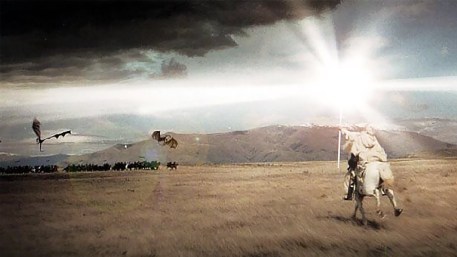
None of the Flat archetypes we will be discussing are naturally negative—although the already-discussed shadow archetypes are often, in themselves, relatively static. The passive negative archetypes in particular tend to remain stuck in their own fear and complacency. These characters can be used as protagonist or antagonists within Negative Flat Arcs—in which the protagonist changes supporting characters for the worse.
However, in regards to the Flat archetypes we will be discussing over the next month and a half, the shadow archetypes are more likely to show up either as antagonists or as the supporting characters who will be inspired to undertake a positive journey by the end of the story.
Usually, any negative archetypes within a Flat-Arc story will be those from arcs that preceded the protagonist’s. For example, if the protagonist is a Parent (the flat or “resting” form of the Queen), then she is most likely to interact with the negative archetypes of Damsel/Vixen, Coward/Bully, or Snow Queen/Sorceress. This is because these “younger” archetypes are the only ones she is equipped to help or defeat at this stage of her own growth. Should she be challenged by a later negative archetype—such as the Puppet/Tyrant—she would need to advance out of the Parent archetype and change into a full-blown Queen Arc.
A Flat-Arc story will be about a character who understands something important that the rest of the story world does not. It is a story about this character using this understanding to advance and benefit the current story world.
***
Flat-Arc stories are not mythic journeys in the same way as the six foundational life-arc archetypes. Although they will often feature glimpses of supporting characters taking these journeys, the Flat Arcs themselves more varied and episodic than the six Positive-Change character arcs. There are many types of stories that can be told about a Child or a Ruler or an Elder. Indeed, many people spend years, decades even, within the same Flat archetype before life confronts them with new challenges that demand they journey on into the subsequent life arc.
As such, I won’t be offering a “mythic beat sheet” for the flat archetypes in the same way as I did for the positive archetypes. The only consistent beat sheet for the Flat Arcs is that of the Flat-Arc character arc structure itself.
Over the course of the next six posts (the final section in this very long series!), we will be diving into the foundational aspects of these interstitial Flat archetypes—and looking at how you can recreate these important archetypes within your own stories.
Stay Tuned: Next week, we will study the Flat archetype of the Child.
Related Posts:
Story Theory and the Quest for MeaningAn Introduction to Archetypal StoriesArchetypal Character Arcs: A New SeriesThe Maiden ArcThe Hero ArcThe Queen ArcThe King ArcThe Crone ArcThe Mage ArcIntroduction to the 12 Negative ArchetypesThe Maiden’s Shadow ArchetypesThe Hero’s Shadow ArchetypesThe Queen’s Shadow ArchetypesThe King’s Shadow ArchetypesThe Crone’s Shadow ArchetypesThe Mage’s Shadow ArchetypesWordplayers, tell me your opinions! Are you more drawn to writing Flat or Change Arcs? Tell me in the comments!Click the “Play” button to Listen to Audio Version (or subscribe to the Helping Writers Become Authors podcast in Apple Podcast or Amazon Music).
___
Love Helping Writers Become Authors? You can now become a patron. (Huge thanks to those of you who are already part of my Patreon family!)The post Archetypal Character Arcs, Pt. 15: Introduction to the 6 Flat Archetypes appeared first on Helping Writers Become Authors.
May 10, 2021
Archetypal Character Arcs, Pt. 14: The Mage’s Shadow Archetypes
 Structurally speaking, it is always the end of a story—its Climactic Moment—that tells us what it is about. The Climactic Moment ends the external plot by telling us who “wins.” But it also, implicitly, ends the protagonist’s arc by showing us whether the character succeeded in arcing positively and helping others to do the same, or if the character failed to overcome inner challenges and “level up.” This also holds true within the overarching cycle of archetypal character arcs, which can be seen to make up the “story structure” of a human life.
Structurally speaking, it is always the end of a story—its Climactic Moment—that tells us what it is about. The Climactic Moment ends the external plot by telling us who “wins.” But it also, implicitly, ends the protagonist’s arc by showing us whether the character succeeded in arcing positively and helping others to do the same, or if the character failed to overcome inner challenges and “level up.” This also holds true within the overarching cycle of archetypal character arcs, which can be seen to make up the “story structure” of a human life.
The Mage Arc is the final moment in the story. It is the Climactic Moment, and as such it tells what the overall story of a single life has been about. Will the character complete the final arc positively, die a “good death,” and leave a powerful legacy to the descendants? Or will the character succumb in the end to the powerful temptations and struggles of either of the potential negative shadow archetypes—the Miser or the Sorcerer? The Miser, of course, represents the passive polarity within the Mage’s shadow; the Sorcerer represents the aggressive polarity.

King, Warrior, Magician, Lover by Robert Moore and Douglas Gillette (affiliate link)
If we think (rightfully) that the challenges of the Maiden and Hero Arcs are hard, these challenges look small indeed in comparison to the stakes of the Mage Arc. There is a reason so few people reach this arc much less fulfill it. As Robert Moore and Douglas Gillette point out in King, Warrior, Magician, Lover:
It is enormously difficult for a human being to develop to full potential.
The good news for the Mage, however, is that by this point in his long and full life, he has gained a treasure trove of resources. He could not have advanced so far had he not proven himself strong enough to push through previous arcs and learn at least some of their lessons.
Moore and Gillette remind us of the deep skill set available to the true Mage:
The energies of the Magician archetype, wherever and whenever we encounter them, are twofold. The Magician is the knower and he is the master of technology. Furthermore, the man who is guided by the power of the Magician is able to fulfill these Magician functions in part by his use of ritual initiatory process. He is the “ritual elder” who guides the processes of transformation, both within and without.
But, as always, whether or not the Mage will fulfill a beneficial role in relationship to society is a choice. And depending in large part on how well he managed the resources won in his previous arcs, he may find himself prone to slipping into his negative forms as either a reclusive and selfish Miser who hordes his life’s wisdom or a megalomaniacal despot who not only has the power to rule (as does a Tyrant) but also the power to obscenely manipulate others via his deep understanding of reality.
The heart of a positive Mage Arc is the ability to surrender not just power, but ultimately life itself. If he cannot master this, he will forfeit his responsibilities of guiding and initiating the young and end instead by trying to control the fate of the Kingdom according to his personal pleasure.
Once again with our series-wide reminder: The arcs and their related archetypes are alternately characterized as feminine and masculine. This is primarily indicating the ebb and flow between integration and individuation, among other qualities. Together all six primary life arcs create a progression that can be found in any human life (provided we complete our early arcs in order to reach the later arcs with a proper foundation). In short, although I will use feminine pronouns in relation to the feminine arcs and masculine pronouns in relation to the masculine arcs, archetypal representations within these journeys can be of any gender.
The Miser: A Passive Hoarding of PowerAs a natural progression of the Crone’s passive counter-archetype of Hermit, the Miser is one who has not overcome the Third Act’s central challenge of relinquishing bitterness over his fate. His bitterness has only grown with the years, and he sees himself as unjustly “banished” from the Kingdom in spite of his long years of good service. He has evolved from being antisocial to being truly misanthropic. He disdains society and therefore young life itself, believing no one is any longer worthy of him and his gifts.
Although he may feel a deep and personal bitterness that he should be so treated, in actuality his fate is probably not specifically worse than anyone else’s at this stage in life. Whether he realizes it or not, what he is really angry about is the fact of his own mortality. He has amassed so much wisdom and power; he has done so “well” at life. And yet he will not be able to buy off Death in the end.
And so he “punishes” the Kingdom—which is always in desperate need of healthy Elders and Mentors—by withdrawing and hoarding everything he has spent his life to gain.
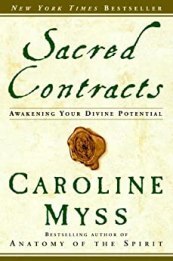
Sacred Contracts by Caroline Myss (affiliate link)
In Sacred Contracts, Caroline Myss talks generally about the Miser archetype (i.e., not just specifically as the counter-archetype of the Mage):
The Miser’s Potential Arcs: Positive and NegativeThe … Miser creates wealth by hoarding money and emotions at the expense of others, and refusing to share them. Although the desire to earn a living or become wealthy is not negative, this archetype also represents a need to control the forces around you for fear of losing your wealth.
The Miser can be seen to represent the foundational trial of the Mage Arc: the need to surrender. As Yoda, one of our culture’s most popular Mage characters, says:
You must give up everything you fear to lose.

If a Miser can learn to do this, he still has the opportunity to return to center as a healthy Mage and complete his final arc in a positive and life-giving way (literally). As ever, the shadow versions of a positive archetype are always present within the arcs. The passive archetype is active in the First Act of any specific arc, at the point when the protagonist is wrestling with the Call to Adventure and deciding whether he can overcome his own passive and cowardly tendencies in order to take one more journey of the soul.
Archetypally, the Mage/Mentor character is often seen to be either roaming about the Kingdom on his own (like Mary Poppins), or still more or less living in the Crone’s hut (like Yoda). Although he has somewhat reintegrated with the Kingdom in his previous arc, he is still separate from it. He lives in the liminal space of Elderhood, no longer enmeshed in the wheels of commerce and survival, although still interacting with it.
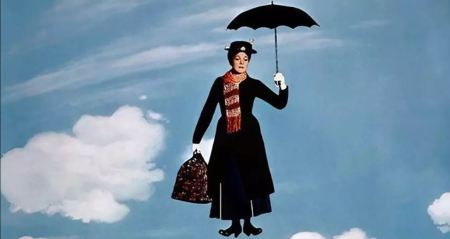
The Mage’s challenge arrives when the Kingdom comes under a supernatural threat (or a natural threat that only the Mage recognizes as also having a supernatural aspect), which requires him to embark on one last mission to mentor the young. If he chooses to accept that challenge, he will rise out of the temptation of the Miser and advance positively.
If he does not, he may remain the Miser by turning his back on the Kingdom and passively enabling its ultimate destruction (which, less symbolically, is always the result even if all he’s refusing is to initiate the young).
Worse yet, he may indeed yet rise up into his full power—only to egoically turn it upon his own Kingdom. Instead of acting the Mentor and using his great power to help the Kingdom learn to fight its battles and continue the life cycle, he instead seizes the Kingdom and its inhabitants as playthings by right of his own power.
The Sorcerer: An Aggressive Abuse of PowerAs the final positive arc, the Mage’s journey is not about “gaining” anything, as in previous arcs. It is entirely about “letting go.” But if he refuses to let go and instead seeks to keep gaining power, he soon finds himself in the excessive and aggressive form of his shadow archetype—the Sorcerer.
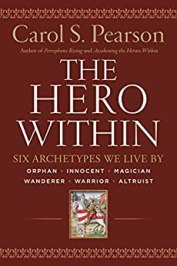
The Hero Within by Carol S. Pearson (affiliate link)
In The Hero Within, Carol Pearson cautions:
Too much Magician, and we lack any sense of limits: we think we can transform everyone and everything.
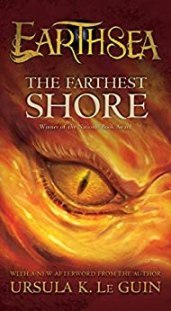
The Farthest Shore by Ursula K. LeGuin (affiliate link)
Like the Mage, the Sorcerer’s final antagonist is that of Death itself. But in seeking to have “power over life,” he becomes instead possessed by the death-force, as Pearson describes in her commentary of Ursula K. LeGuin’s fantasy The Farthest Shore (adapted, in part, into Studio Ghibli’s Tales of Earthsea film):
[The Mage Sparrowhawk] explains that what has caused [the Kingdom to become by possessed by death’s shadow] is that people desire “power over life,” which he calls “greed.” The only power worth having, he notes, is not “power over,” but “power to” accept life, to allow it in. The desire to control life and death in order to attain immortality creates a void within and throws the cosmos out of balance. Sparrowhawk explains to [the Sorcerer] Cob that “Not all the songs of earth, not all the stars of heaven could fill your emptiness,” for Cob, in going for “power over,” has lost himself and his true name. Magicians, then, give up the illusion of control to allow life in themselves and in others. When they do so, they right the balance of the universe.
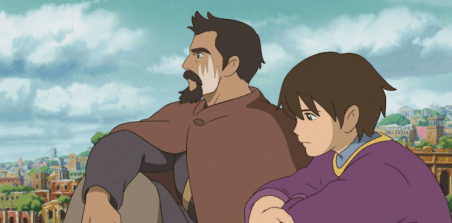
Our other great fantasies of the age also offer us this same powerful contrast between the life-giving balance of the true Mage and the selfish destruction of the Sorcerer. We see Yoda contrasting Emperor Palpatine in Star Wars, Dumbledore contrasting Voldemort in Harry Potter, and perhaps most precisely Gandalf contrasting Saruman in Lord of the Rings. The latter characters are all death-dealers, determined to amass dark power to themselves at the cost of “lesser” beings.

Myss notes that the shadow sides of the Mage are found in:
…the misuse of the power and knowledge that comes through them. Seduction and trickery brought about through magic and wizardry play on the desires of many people to transform their lives.

The Hero With a Thousand Faces Joseph Campbell (affiliate link)
This emphasizes the point that the Sorcerer not only coerces submission from the Kingdom through his actual power, but he also convinces people to willingly follow his wishes by seducing them into their own shadow archetypes. In The Hero With a Thousand Faces, Joseph Campbell references Goethe’s famous “devil” character:
Goethe presents the masculine guide in Faust as Mephistopheles—and not infrequently the dangerous aspect of the “mercurial” figure is stressed; for he is the lurer of the innocent soul into realms of trial.

In many ways, the Sorcerer represents the ultimate “low” to which a human being can fall. If he truly embodies this archetype (or, in the potent phrase, is truly “possessed” by this archetype), he is unlikely to find within himself the ability to return to the light. Indeed, he will probably find it difficult to find within himself the desire to return to the light.
In part because he has advanced so far in his dark power, and also in part because his time on earth is running out, he has little to no chance of returning to a final positive arc. Only if, miraculously, he can return to what Pearson describes (below) will he be able to reclaim a glimmer of light:
Magicians, believing that nothing essential ever is lost, may welcome the organic and gentle letting go of the old to make way for new growth, new life.
But neither is he likely to arc negatively—because, again, he’s out of time. At worst, his story is likely to end with the total destruction of the Kingdom and himself with it. At best, he will either destroy himself through his own hubristic overreach, or the Heroes, Queens, Kings, and Mages will rise up to overthrow him.
The cycle of life wants always to continue. Even if a terrible Sorcerer rises up, wields great power, and does everything he can (whether consciously or unconsciously) to destroy that cycle by breaking out of his own sacred role of Mage and Mentor, new life and new growth will return to the Kingdom once more—like new green grass after a bitter winter.
Key Points of the Mage’s Regressive ArchetypesFor easy reference and comparison, I will be sharing some scannable summations of each arc’s key points:
Passive Shadow Archetype: Miser is Selfish (to protect from consequences of Enlightenment)
Aggressive Shadow Archetype: Sorcerer is Evil (aggressive use of Enlightenment)
Positive Mage Arc: Sage to Saint (Liminal World to Yonder World)
Mage’s Story: A Mission.
Mage’s Symbolic Setting: Cosmos
Mage’s Lie vs. Truth: Attachment vs. Transcendence
“Love must protect others from the journey of life.” versus “True love is transcendent and allows life to unfold.”
Mage’s Initial Motto: “I, the knowing.”
Mage’s Archetypal Antagonist: Evil
Mage ’ s Relationship to Own Negative Shadow Archetypes:
Either Miser finally opens himself up through his Wisdom to gain Transcendence.
Or Sorcerer learns to surrender his worldly wisdom in exchange for true Transcendence.
Examples of the Miser and Sorcerer ArchetypesExamples of the Miser and Sorcerer archetypes include the following. Click on the links for available structural analyses.
Miser
Grendel’s mother in BeowulfScrooge in (the beginning of) A Christmas Carol Louis Renault in CasablancaFrollo in The Hunchback of Notre DameSorcerer
Maleficent in Sleeping BeautyJadis the White Witch in The Lion, the Witch, and the Wardrobe Saruman the White in The Lord of the Rings Emperor Palpatine in Star Wars Mr. Tulkinghorn in Bleak HouseJohn Hammond in Jurassic Park Voldemort in Harry Potter and the Order of the Phoenix (among others)Stay Tuned: Next week, we will begin the final part of the series with an introduction to the flat or “resting” archetypes.
Related Posts:
Story Theory and the Quest for MeaningAn Introduction to Archetypal StoriesArchetypal Character Arcs: A New SeriesThe Maiden ArcThe Hero ArcThe Queen ArcThe King ArcThe Crone ArcThe Mage ArcIntroduction to the 12 Negative ArchetypesThe Maiden’s Shadow ArchetypesThe Hero’s Shadow ArchetypesThe Queen’s Shadow ArchetypesThe King’s Shadow ArchetypesThe Crone’s Shadow ArchetypesWordplayers, tell me your opinions! Can you think of any further examples of stories that feature either the Miser or the Sorcerer? Tell me in the comments!Click the “Play” button to Listen to Audio Version (or subscribe to the Helping Writers Become Authors podcast in Apple Podcast or Amazon Music).
___
Love Helping Writers Become Authors? You can now become a patron. (Huge thanks to those of you who are already part of my Patreon family!)The post Archetypal Character Arcs, Pt. 14: The Mage’s Shadow Archetypes appeared first on Helping Writers Become Authors.
May 3, 2021
Archetypal Character Arcs, Pt. 13: The Crone’s Shadow Archetypes
 The final two archetypal character arcs within the life cycle signal a distinct departure from the realm of the known. After sacrificing herself for the Kingdom at the end of the King Arc, the seemingly diminished Crone, leaves behind the “real” world of Kingdom and throne and enters instead the spooky forests and liminal hinterlands of Elderhood. Symbolically, the final two positive arcs—Crone and Mage—are decidedly more supernatural than those that preceded.
The final two archetypal character arcs within the life cycle signal a distinct departure from the realm of the known. After sacrificing herself for the Kingdom at the end of the King Arc, the seemingly diminished Crone, leaves behind the “real” world of Kingdom and throne and enters instead the spooky forests and liminal hinterlands of Elderhood. Symbolically, the final two positive arcs—Crone and Mage—are decidedly more supernatural than those that preceded.
In archetypal and mythic stories, we see this shift represented by these characters’ ability to perform “magic.” This magic can be seen to represent the potential for a deeper spirituality, but it also certainly represents the accumulated life experience, knowledge, and wisdom of the characters’ arcs up until this point. The two arcs prior to that of the Crone—the Queen and the King—were focused on issues of power. As such, a character who has successfully completed those arcs will have a wily understanding of power that outstrips even the physically powerful youths of the earlier arcs. (We see this delightfully represented in the film Secondhand Lions, in which Robert Duvall’s Crone character handily beats up a gang of Bullies—then takes them home and offers them his initiatory speech about “how to be a man.”)
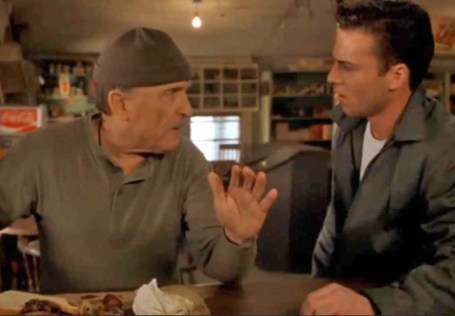
As we’ve already discussed, the Crone offers the potential for a profound arc into the deeper mysteries of Life and Death. But it is also a deeply fraught archetype. As the structural representation of life’s Third Plot Point (often called the “Low Moment” or the “Dark Night of the Soul” or simply “Death/Rebirth”), the Crone successfully completes her King Arc only to be faced with the most frightening existential challenge of her long life.
The Crone, all alone in her hut in the woods, represents a time of withdrawal from the world. This is so she can integrate the great losses and lessons she has taken away from her life’s Second Act period. That she can successfully mourn and integrate these lessons is not a given. If she cannot come to peace with the life she has so far lived, her regrets about what she might not have done or what she can no longer do, and her inevitably encroaching death—she may easily slide into one or both of her negative counter-archetypes of Hermit and Wicked Witch. The Hermit represents the passive polarity within the Crone’s shadow; the Witch represents the aggressive polarity.
The Hermit and the Witch can arise at this time for any number of reasons, but often it is because, as T.S. Eliot writes:
We had the experience but missed the meaning.
Once again with our series-wide reminder: The arcs and their related archetypes are alternately characterized as feminine and masculine. This is primarily indicating the ebb and flow between integration and individuation, among other qualities. Together all six primary life arcs create a progression that can be found in any human life (provided we complete our early arcs in order to reach the later arcs with a proper foundation). In short, although I will use feminine pronouns in relation to the feminine arcs and masculine pronouns in relation to the masculine arcs, archetypal representations within these journeys can be of any gender.
The Hermit: A Passive Rejection of Both Life and DeathIn many ways, the Hermit is an almost inevitable beat within the Crone’s “resurrection” after dying for the Kingdom and departing it in her previous arc. It is symbolically important that the Crone lives alone in a hut in the woods—and often scares away (intentionally or unintentionally) anyone who might disturb her. This is because her first steps are those of healing, processing, and integrating. The Death symbolized in the end of the King Arc is profound, both in itself (represented perhaps by a person’s forced retirement from a beloved occupation) and in its foreshadowing of literal Death. That’s a lot. If the Crone is to have any chance of truly maturing into her full positive potential, she must first make peace with what she has lost. And she will likely do this best in solitude.
However, the danger (especially if she is indeed chronologically in the Third Act of her life) is that she may stay there. The struggle to rise once more from her warm bed or her sunny rocking chair may be too great. Her grief over the life she has lost may seem insurmountable. This may be even more true if she has struggled with passive archetypes all her life and therefore must now not only mourn the youth she has lost but confront regrets for a life that now seems unlived.
The Hermit’s central challenge is that simply of … giving up. Although she may have thirty or more years yet to live, she can know with certainty that the greater part of her life is now behind her. In the face of her waning physical power, she may succumb to the question: “What’s the point?” Even when her next “Call to Adventure” arrives in the form of a Maiden or Hero needing her guidance, she may choose simply to roll over, turn her face to the wall, and refuse to reintegrate with a Kingdom that desperately needs her wisdom and her capacity to initiate the young.
The Hermit’s Potential Arcs: Positive and NegativeAs stated, the Hermit is almost inevitably inherent within the beginning stages of the Crone herself. In many ways, the Crone is about rising above the somnolent lure of the Hermit. There is a great triumph in stories of characters overcoming what is, in many ways, the greatest antagonist any of us will ever face in the actual living of our lives. But to do so the Hermit must be willing to surrender many of her old identities and viewpoints.
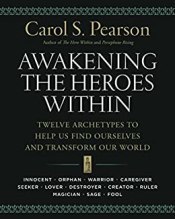
Awakening the Heroes Within by Carol S. Pearson (affiliate link)
She can no longer fixate on the future as she did in younger arcs. Now, she must ground herself in the present. In the twelve-archetype system Carol S. Pearson presents in Awakening the Heroes Within, she names the Fool as the “definitive” archetype. She considers the “Holy Fool” as a full-circle return to the Innocent archetype of childhood, but now with all the wisdom of a fully-lived life:
…in old age, we are also challenged to go beyond the need to find meaning through taking care of others, through achievement, through changing the world and making a difference. We need to learn to simply love life for its own sake, day by day. This is also the time when we have the license to be eccentric, irrational, and even a bit childish if we want. Indeed, we may feel foolish because our memories fail, our wits are not so clear as they used to be, and we feel at the mercy of our bodies, which embarrass us by their frailty and incapacity. This is the challenge of the Fool—to love life for life’s sake and ourselves just as we are.
Within this deep self-acceptance and love, the Crone may then also find the capacity for an even deeper love of the Kingdom and its young occupants.
If, however, the Hermit cannot rise from her bed of self-pity, regret, and lethargy, she may find her life-force simply fading out. She may not live out the full remainder of her life expectancy, or if she does she may, as they say, no longer “live” but simply “exist.”
Another potential shadow arc is that from Hermit to Wicked Witch. In some ways, this is a positive transition, since it at least signals a revival of purpose and liveliness. But in others, it is deeply destructive, since it signals that she has not overcome her resentment or bitterness about her fate—and will turn upon the very young people she is meant to guide and protect.
The Wicked Witch: An Aggressive Rejection of Both Life and DeathSomeone willing to fully embody the positive Crone Arc is one who will come to fully align herself with Life—and to use her great wisdom and experience to help guide the youths into their own archetypal life journeys. But if the archetype turns into the aggressive polarity of the Wicked Witch, she will instead align herself with Death—and not in a natural way. Since she has failed to visit and return from the Underworld as the fulfillment of her Crone Arc, she will also fail to possess a full and generative understanding of Death. To her, Death is something to be feared—and she wields this fear against others.
Prosaically, the Witch is simply an older person who refuses the responsibilities of Elderhood and instead manipulates and bullies those around her in order to get her needs met. More metaphorically, the Witch is a frequent symbolic antagonist in many types of stories. We recognize her by her hatred for life—especially the life that is represented by the young of the Kingdom.
As in Snow White, the Witch may often be presented as an initially beautiful Queen—only to reveal her true hideousness in that she is feeding off the life force of the Kingdom’s young and beautiful Maidens.


The Hero Within by Carol S. Pearson (affiliate link)
In some ways, the Witch seems to be far more powerful than the Crone (at least at the beginning of the Crone Arc), but this can be because in claiming her aggressive power she has “gotten ahead of herself.” In The Hero Within, Pearson notes the similarities that aggressive shadow archetypes often share with the subsequent positive archetype:
The roles they play often are varieties of the archetypes that inform the next stages of the journey; however, they may get form right, but not the substance.
This is because the aggressive archetypes are always grasping for more power. They have the advantage over the passive archetypes of at least wanting to progress, but they are unwilling and/or have not understood how to do so from a place of health and centeredness.
The Witch’s Potential Arcs: Positive and NegativeIf the character has not fully entrenched herself in the Witch’s bitterness and hatred of life—that is, become “possessed” by the archetype—she may yet integrate her massive transition from the mature arcs of her life’s Second Act into the elder arcs of her life’s Third Act. This is a tricky space, since once a character fully inhabits her bitterness—especially in the face of the fact that she now has comparatively little time left in which to resolve it—she may not be able to pull herself out.
Within film and literature, we don’t often see redemptive ends for characters who have fully embodied the Witch archetype (which, it should go without saying by this point in the series, is distinct from a character who may be a witch—such as Glinda in The Wizard of Oz). This is because the aggressive negative archetypes grow successively more aggressive and more negative as they go. It’s hard enough to redeem a full-blown Tyrant (as mentioned last week, “redeemed” Tyrants almost always die in the end), but it grows even harder to redeem the aggressive archetypes of the Third Act.
Therefore, on the less happy side, the Witch may end her story unchanged—having wreaked varying degrees of havoc upon the world around her. If her children and grandchildren—her Maidens, Heroes, Queens, and Kings—cannot escape her influence, they may well be doomed (as shown in Meryl Streep’s role in August: Osage County).

It is also possible the Witch may summon enough power (and longevity) to “advance” one more time into the pinnacle of aggressive power—the Mage’s aggressive counter-archetype of Sorcerer. This most mystical of all aggressive archetypes isn’t represented too often in realistic literature, but is almost inevitably personified in fantasy as evil incarnate. It’s not a good way to go out!
Key Points of the Crone’s Regressive ArchetypesFor easy reference and comparison, I will be sharing some scannable summations of each arc’s key points:
Passive Shadow Archetype: Hermit is Misanthropic (to protect from consequences of Insight)
Aggressive Shadow Archetype: Witch is Punitive (aggressive use of Insight)
Positive Crone Arc: Elder to Sage (Uncanny World to Underworld)
Crone’s Story: A Pilgrimage.
Crone’s Symbolic Setting: Underworld
Crone’s Lie vs. Truth: Death vs. Life
“All life ends in death.” versus “Life is Death and Death is Life.”
Crone’s Initial Motto: “We, the accepting.”
Crone’s Archetypal Antagonist: Death
Crone ’ s Relationship to Own Negative Shadow Archetypes:
Either Hermit finally accepts her Perception in order to grow into Wisdom.
Or Witch learns to submit her Perception to the truths of greater Wisdom.
Examples of the Hermit and Witch ArchetypesExamples of the Hermit and Witch archetypes include the following. Click on the links for structural analyses.
Hermit
Elderly Margaret Thatcher in beginning of The Iron Lady Matthew and Marilla Cuthbert in beginning of Anne of Green GablesSilas Marner in beginning of Silas MarnerAunt March in Little Women Mrs. Snow in PollyannaWitch
Wicked Witch of the West in The Wizard of OzWitch of the Waste in Howl’s Moving Castle Norma Desmond in Sunset BoulevardFagin in Oliver TwistViolet Weston in August: Osage CountySister Aloysius Beauvier in DoubtYubaba in Spirited AwayCaptain Ahab in Moby Dick Mr. Dorrit in Little DorritStay Tuned: Next week, we will study the shadow archetypes of the Mage: Miser and Sorcerer.
Related Posts:
Story Theory and the Quest for MeaningAn Introduction to Archetypal StoriesArchetypal Character Arcs: A New SeriesThe Maiden ArcThe Hero ArcThe Queen ArcThe King ArcThe Crone ArcThe Mage ArcIntroduction to the 12 Negative ArchetypesThe Maiden’s Shadow ArchetypesThe Hero’s Shadow ArchetypesThe Queen’s Shadow ArchetypesThe King’s Shadow ArchetypesWordplayers, tell me your opinions! Can you think of any further examples of stories that feature either the Hermit or the Wicked Witch? Tell me in the comments!Click the “Play” button to Listen to Audio Version (or subscribe to the Helping Writers Become Authors podcast in Apple Podcast or Amazon Music).
___
Love Helping Writers Become Authors? You can now become a patron. (Huge thanks to those of you who are already part of my Patreon family!)The post Archetypal Character Arcs, Pt. 13: The Crone’s Shadow Archetypes appeared first on Helping Writers Become Authors.
April 26, 2021
Archetypal Character Arcs, Pt. 12: The King’s Shadow Archetypes
 Throughout the progression of the six archetypal character arcs that make up the human life cycle, we see a steady progression of the character’s power. As we explored in the positive King Arc, this final mid-life arc represents the height of temporal power. The King is someone who wields a vast amount of influence not just over his own life or within his personal relationships, but over extended numbers of people. Symbolically, he rules over a Kingdom, but more practically, his empire could be anything from a large family to a company.
Throughout the progression of the six archetypal character arcs that make up the human life cycle, we see a steady progression of the character’s power. As we explored in the positive King Arc, this final mid-life arc represents the height of temporal power. The King is someone who wields a vast amount of influence not just over his own life or within his personal relationships, but over extended numbers of people. Symbolically, he rules over a Kingdom, but more practically, his empire could be anything from a large family to a company.
In short, he’s the boss. He knows it. Everybody knows it. And he holds within his hand, whether literally or symbolically, the power of life and death over his subjects. Will he wield that powerful responsibly in a way that brings life to the Kingdom? This depends on whether he is centered within his positive aspect of King, or whether he is gripped by his shadow archetypes of Puppet and Tyrant. The Puppet represents the passive polarity within the King’s shadow; the Tyrant represents the aggressive polarity.
Along with the growing power that accumulates as a character progresses farther into the life arcs, so too the stakes rise proportionately. The more power the character accumulates, the greater his ability to do good to others—or evil. This evil inevitably results from a stagnation of growth. It could happen because a character was thrust into a position of leadership even though he failed to properly complete previous initiations. Or it could be he worked his way up through the aggressive archetypes, building his Kingdom on the backs of those he selfishly oppressed along the way.

King, Warrior, Magician, Lover by Robert Moore and Douglas Gillette (affiliate link)
It’s also possible for someone to responsibly and authentically reach an archetype, only to stall out in his growth by over-identifying with his current archetype. In King, Warrior, Magician, Lover, Robert Moore and Douglas Gillette refer to this as being “possessed” by an archetype. They indicate how the King archetype, particularly, may be forced into a shadow version of his own arc—still facing the propitiatory sacrifice demanded of him, but doing so unwillingly:
As Sir James Frazer and others have observed, kings in the ancient world were often ritually killed when their ability to live out the King archetype began to fail…. The danger for men who become possessed by this energy is that they too will fulfill the ancient pattern and die prematurely.

The Hero With a Thousand Faces Joseph Campbell (affiliate link)
It is no coincidence that the negative archetypes of later arcs often act as antagonists to the younger arcs. A King gone bad makes a formidable foe with the opportunity for huge stakes. He shows up most often in Hero stories (in which the Hero’s Quest may be about trying to “heal” the Sick King) and Queen stories (in which the Queen must grow into a leader worthy of responsibly replacing the unfit King). In The Hero With a Thousand Faces, Joseph Campbell frequently refers to this villain as the “tyrant ogre” or “Holdfast”—the representative of a stalled status quo:
The upholding idea of the community is lost. Force is all that binds it. The emperor becomes the tyrant ogre (Herod-Nimrod), the usurper from whom the world is now to be saved.
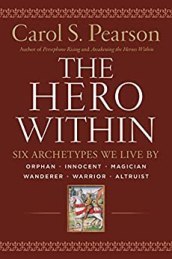
The Hero Within by Carol S. Pearson (affiliate link)
Like all the negative archetypes, the Puppet and the Tyrant represent a personal failure to examine the Lies the Character Believes, to lean into growth, and to accept the next level of maturity and responsibility within one’s life. In The Hero Within, Carol Pearson references M. Scott Peck’s People of the Lie as:
…[defining] evil as those who would rather harm another than see the truth about themselves.
Once again with our series-wide reminder: The arcs and their related archetypes are alternately characterized as feminine and masculine. This is primarily indicating the ebb and flow between integration and individuation, among other qualities. Together all six primary life arcs create a progression that can be found in any human life (provided we complete our early arcs in order to reach the later arcs with a proper foundation). In short, although I will use feminine pronouns in relation to the feminine arcs and masculine pronouns in relation to the masculine arcs, archetypal representations within these journeys can be of any gender.
The Puppet: A Passive Refusal to Be a True Servant-LeaderThe passive archetypes inevitably represent missed steps within the character’s growth. They “skipped a grade”—but not in a good way. The farther they get in life, the more egregious this lack becomes, both for themselves and for others. The Puppet is a potent example.
As the passive polarity within the King’s negative counter-archetypes, the Puppet necessarily represents a character who at least nominally holds a great deal of power. But he is also a character who lacks the strength, ability, or perhaps even desire to wield that power. He may have been born to the power, or he may have fostered a seeming sense of “maturity” to the point that he sneakily advanced beyond his actual capabilities.
Pearson warns:
In Jungian psychology, the shadow is formed by repression. If we do not express the positive side of an archetype, it can take us over, but in its negative form.
Regardless of exactly how he manifests, the Puppet is someone who wields his power only randomly and to his own benefit. Either he is content to fob off all true responsibilities onto others, or he himself is at the mercy of someone more powerful (likely a Tyrant or a Sorcerer).
The character will almost inevitably display a “spoiled brat” sense of entitlement that reveals his true level of immaturity. This puerility is exceedingly dangerous to others due to the power with which it is paired, but as with all the passive shadow archetypes, it represents a deep sense of fear and insecurity within the Puppet himself. He isn’t truly powerful; he just wields power. Gillette and Moore note:
This sense of deprivation and lack of “ownership” of the sources of and motives for power are always features of the passive poles of the archetypes.
In modern storytelling, a clear example can be found in the Game of Thrones characters Joffrey and Tommen Baratheon. Even though psychotic Joffrey exhibits clear signs of wanting to be a Tyrant, both he and later his well-intentioned little brother Tommen are obviously Puppets to their Tyrant grandfather Tywin Lannister. Both are Puppets purely for the reason that they were thrust into positions of power without having properly arced into the true maturity of the King (both being only teenagers).
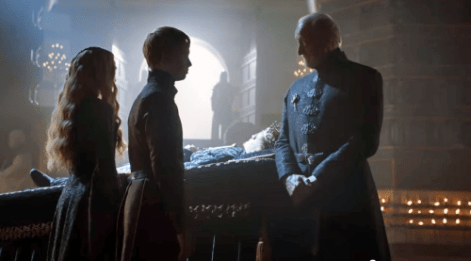
It is always possible for a passive archetype to rise to the challenge and learn the lessons of its related positive arc. However, the farther along a character is within the chronological arcs, the more likely he will have to go back to fulfill previous archetypes first. This “leveling up” can be done all within the same story in a relatively short amount of time. But the degree of transformation will be tremendous.
If the Puppet’s primary problem is that he is not chronologically advanced into the proper placement of the King Arc (such as in the case of the Baratheon princes in Game of Thrones), his best path of growth is more likely to be a return to his properly timed arc (i.e., Maiden or Hero).
However, the more powerful a character is, the harder it can be to let go of that power—however stagnated or unhealthy it may be personally. Only a person brave enough to undergo an extraordinary transformation is likely to release his ill-gotten temporal power, even if that power is just nominal, as it inevitably is in the case of the Puppet.
And so it is more likely that the Puppet will refuse to evolve and will therefore end his story as a tragedy in the midst of the Kingdom he could not and would not protect. Or he will rise up to seize more power, refusing to step aside even when it is time and instead using his position to oppress his Kingdom as the Tyrant.
The Tyrant: An Aggressive Refusal to Be a True Servant-LeaderThe Tyrant is, of course, a chillingly well-known archetype—historically, globally, and personally. Humans have a hard enough time wielding power, much less surrendering it—and surrender is the heart of a true King Arc.
The Tyrant, however, never surrenders. The Tyrant will take his power to the grave—and his Kingdom with him. As such, however well he may manage the actual affairs of the Kingdom (and many do), he is ultimately a curse upon his Kingdom and his subjects. The true King steps aside to make room for new life; the Tyrant blocks that life and ultimately can give his Kingdom only death, even if he does not directly desire such.
Gillette and Moore speak to the profound unhealth that governs and emerges from the Tyrant’s refusal to sacrifice for his Kingdom:
The tyrant king is not in the Center and does not feel calm and generative. He is not creative, only destructive. If he were secure in his own generativity and in his own inner order—his Self structures—he would react with delight at the birth of new life in his realm.
Instead, the Tyrant proves his own distrustful and (ironically) immature relationship to power by doing everything he can to hang on to everything he’s got. Since, as we’ve seen, the King Arc is all about surrendering power and prestige as a preparation for the descent into the Underworld of Elderhood (and, eventually, the end of life), the Tyrant’s rejection of this arc is ultimately an attempt to reject his own mortality. The unrepentant Tyrant, then, is always doomed.
Campbell, of course, has much to say on the subject:
The Tyrant’s Potential Arcs: Positive and NegativeThe figure of the tyrant-monster is known to the mythologies, folk traditions, legends, and even nightmares, of the world; and his characteristics are everywhere essentially the same. He is the hoarder of the general benefit. He is the monster avid for the greedy rights of “my and mine.” The havoc wrought by him is described in mythology and fairy tale as being universal throughout his domain. This may be no more than his household, his own tortured psyche, or the lives that he blights with the touch of his friendship and assistance; or it may amount to the extent of his civilization. The inflated ego of the tyrant is a curse to himself and his world—no matter how his affairs may seem to prosper. Self-terrorized, fear-haunted, alert at every hand to meet and battle back the anticipated aggressions of his environment, which are primarily the reflections of the uncontrollable impulses to acquisition within himself, the giant of self-achieved independence is the world’s messenger of disaster, even though, in his mind, he may entertain himself with human intentions. Wherever he sets his hand there is a cry (if not from the housetops, then—more miserably—within every heart): a cry for the redeeming hero, the carrier of the shining blade, whose blow, whose touch, whose existence, will liberate the land.
The responsibilities of the King are tricky ones. He must constantly weigh such questions as “How much power is too much?” and “Where have I the right to rule over my subjects—and where am I overstepping?” Every King will make mistakes. Present within every positive King is always the shadow of the potential (and sometimes actualized) Tyrant. As a result, there is also always the potential for a return to the King in every Tyrant (especially if he has proven himself faithful in his earlier arcs).
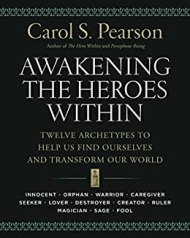
Awakening the Heroes Within by Carol S. Pearson (affiliate link)
In Awakening the Heroes Within, Pearson talks about the one thing the King (or any archetype) can do to guard against or return from possession by a negative counter-archetype:
The danger of becoming rigid and locked into old ways and hence harming the kingdom is always present for the Ruler. One way to avoid becoming an evil tyrant is to continue to take our journeys throughout life so that we are constantly renewed.
Because the King Arc ends (at least symbolically, sometimes literally) with his death, it is not uncommon for a repentant Tyrant to also end by giving his life for his Kingdom. Depending on how far gone he is within the negative archetype, this may be the best he can hope for in trying to repair his own mistakes.
But he may also perish in less admirable circumstances. If he refuses to relinquish power and remains stubbornly in his unregenerative patterns, a younger Hero or Queen may arise to remove his blight from upon the Kingdom. Gillette and Moore reference the biblical story of King David replacing the Tyrant Saul:
Though the prophet Samuel has told Saul that Yahweh no longer wants him to be king—that is, to embody the King energy for the realm—Saul’s Ego has become identified with the King and refuses to relinquish the throne.

If the Tyrant is exceedingly powerful, and if he is not confronted by Heroes or Queens strong enough to dethrone him, the inevitable cycle of life may still push him off his throne at some point. Old age will claim him one way or another. But if he cannot gracefully accept the transition from King to Crone, he is likely instead to devolve into the manipulative (and in many ways greater) powers of the Witch, working for her own ends behind the scenes—and then perhaps eventually returning to the world’s stage as the even more destructive Sorcerer.
Key Points of the King’s Regressive ArchetypesFor easy reference and comparison, I will be sharing some scannable summations of each arc’s key points:
Passive Shadow Archetype: Puppet is Irresponsible (to protect from consequences of Power)
Aggressive Shadow Archetype: Tyrant is Oppressive (aggressive use of Power)
Positive King Arc: Leader to Elder (moves from Regal World to Preternatural World)
King’s Story: An Awakening.
King’s Symbolic Setting: Empire
King’s Lie vs. Truth: Strength vs. Surrender
“Physical strength is the pinnacle of human achievement.” versus “Spiritual strength requires me to relinquish my physical strength.”
King’s Initial Motto: “I, the capable.”
King’s Archetypal Antagonist: Cataclysm
King ’ s Relationship to Own Negative Shadow Archetypes:
Either Puppet finally wields his Power out of a growing Perception.
Or Tyrant learns to submit his Power to the bigger picture of Perception.
Examples of the Puppet and Tyrant ArchetypesExamples of the Puppet and Tyrant archetypes include the following. Click on the links for structural analyses.
Puppet
Joffrey and Tommen Baratheon in Game of ThronesTheoden in The Two TowersTsarina Alexandra in Rasputin and the EmpressNels Olson in The Little House on the PrairiePrince John in Robin HoodTyrant
Heathcliff in Wuthering Heights Michael Corleone in The Godfather Tywin Lannister in Game of ThronesDaenerys Targaryen in Game of Thrones (second half)Miranda Priestley in The Devil Wears PradaOld Man Potter in It’s a Wonderful Life Miss Minchin in A Little PrincessCatherine de Burgh in Pride & Prejudice Edward Rochester in Jane Eyre Mrs. Merdle in Little Dorrit Professor Delores Umbridge in Harry Potter and the Order of the PhoenixStay Tuned: Next week, we will study the shadow archetypes of the Crone: Hermit and Witch.
Related Posts:
Story Theory and the Quest for MeaningAn Introduction to Archetypal StoriesArchetypal Character Arcs: A New SeriesThe Maiden ArcThe Hero ArcThe Queen ArcThe King ArcThe Crone ArcThe Mage ArcIntroduction to the 12 Negative ArchetypesThe Maiden’s Shadow ArchetypesThe Hero’s Shadow ArchetypesThe Queen’s Shadow ArchetypesWordplayers, tell me your opinions! Can you think of any further examples of stories that feature either the Puppet or the Tyrant? Tell me in the comments!Click the “Play” button to Listen to Audio Version (or subscribe to the Helping Writers Become Authors podcast in Apple Podcast or Amazon Music).
___
Love Helping Writers Become Authors? You can now become a patron. (Huge thanks to those of you who are already part of my Patreon family!)The post Archetypal Character Arcs, Pt. 12: The King’s Shadow Archetypes appeared first on Helping Writers Become Authors.




